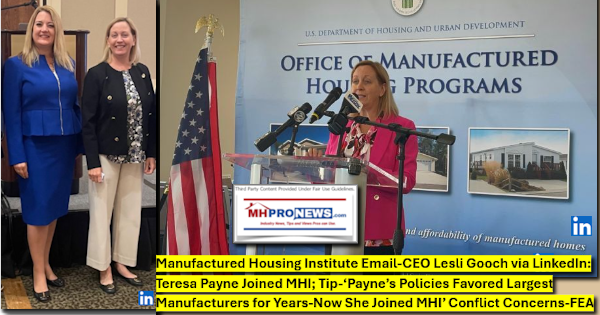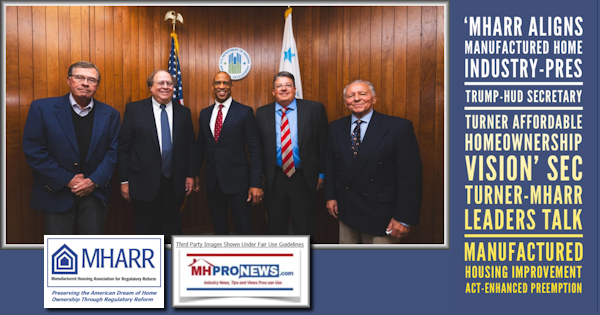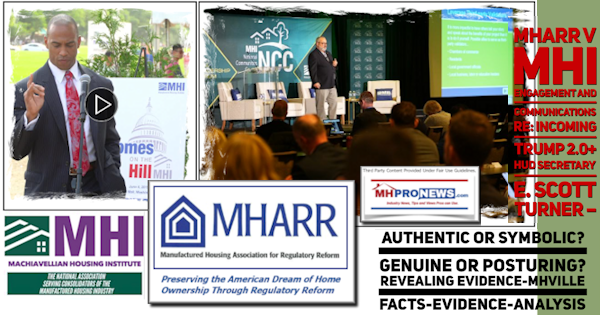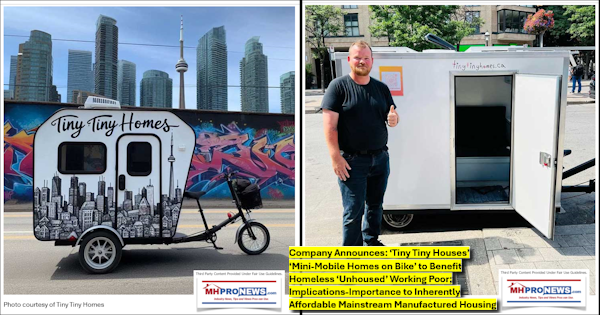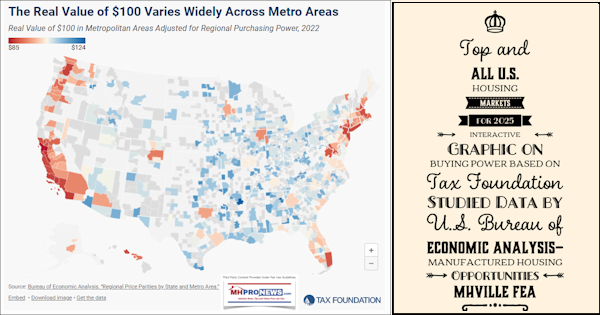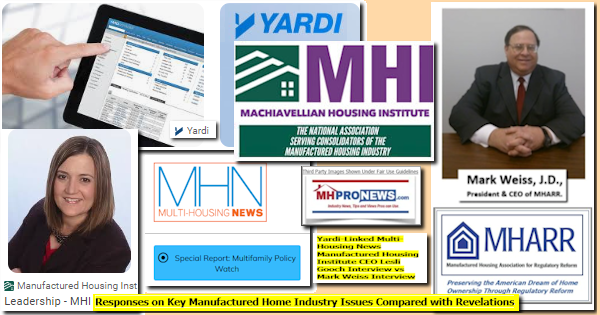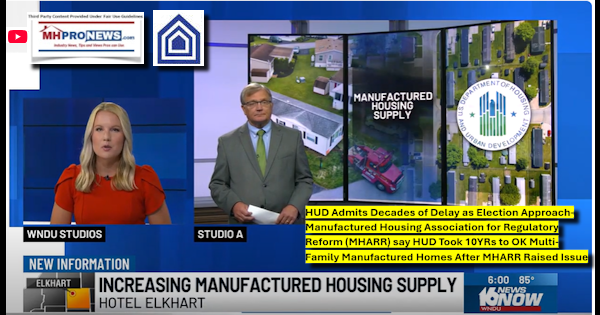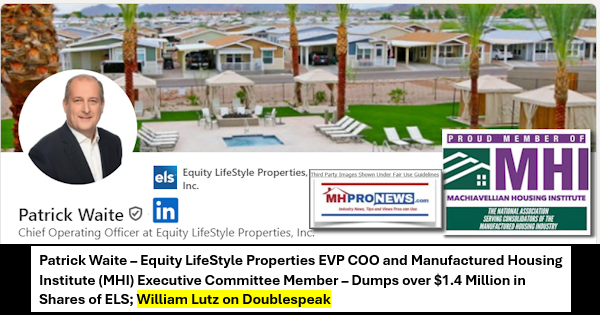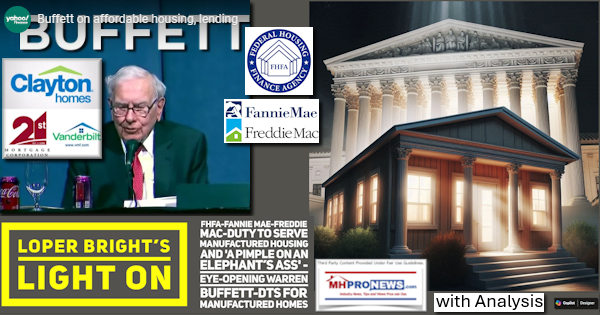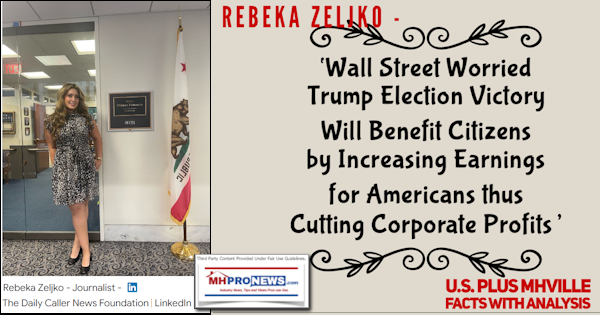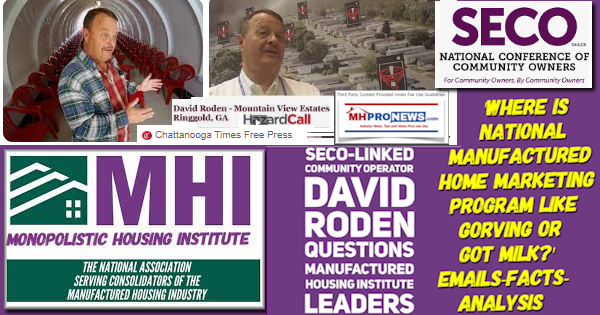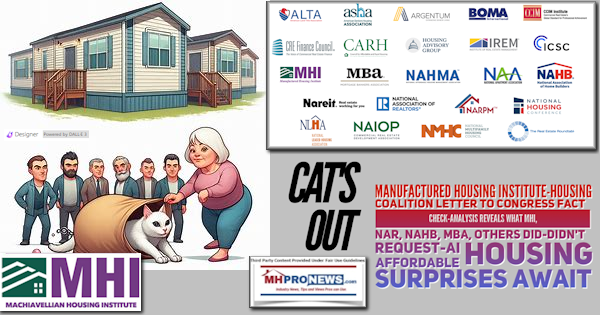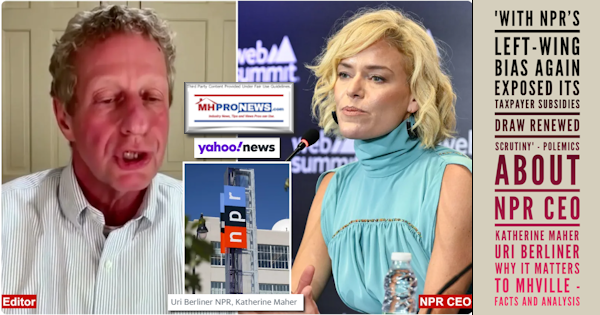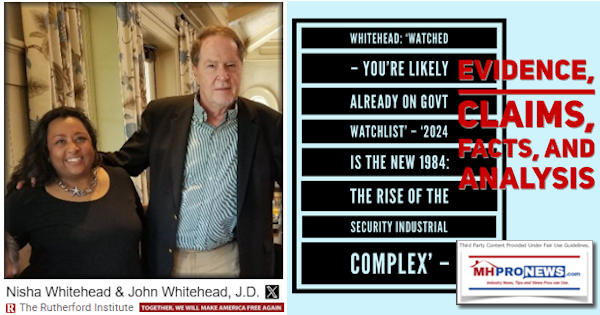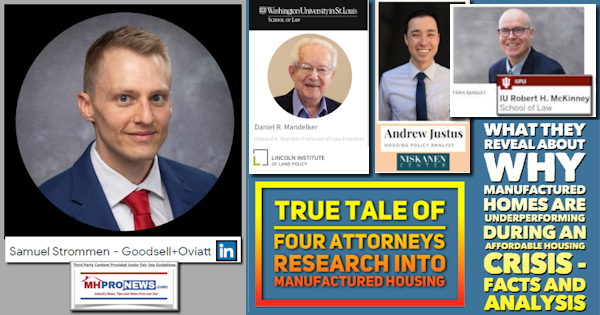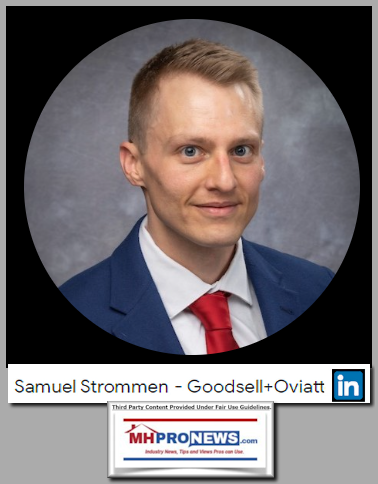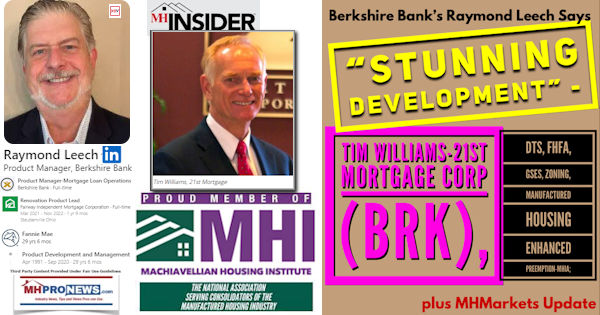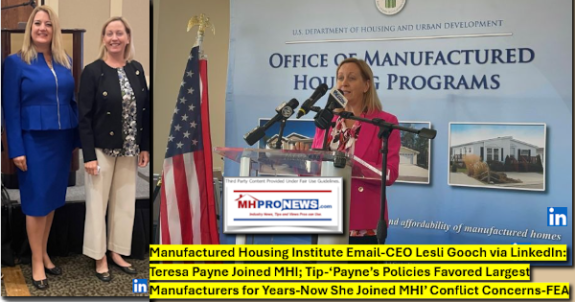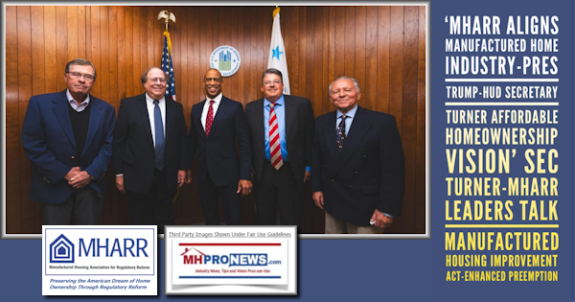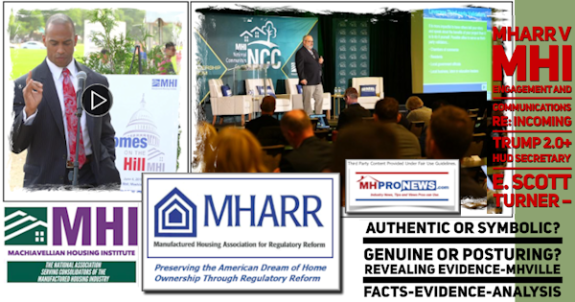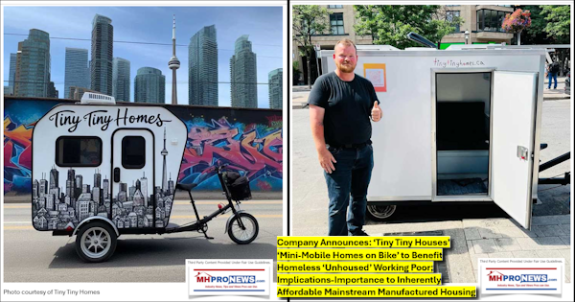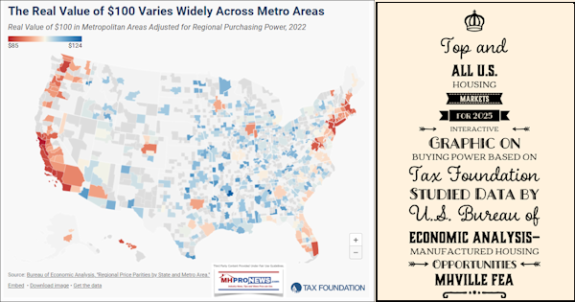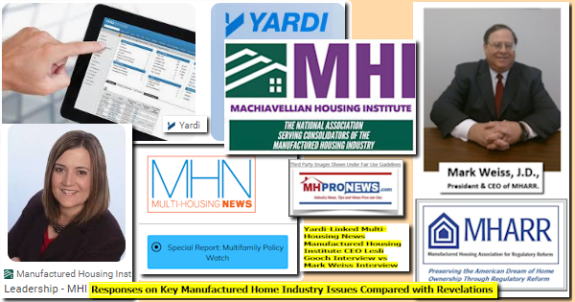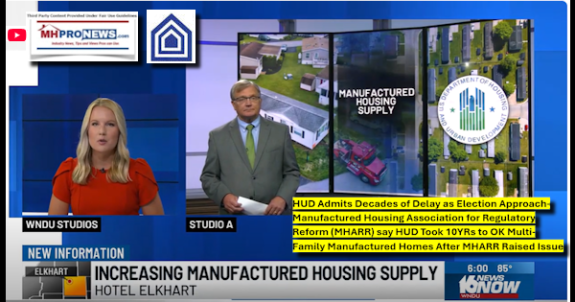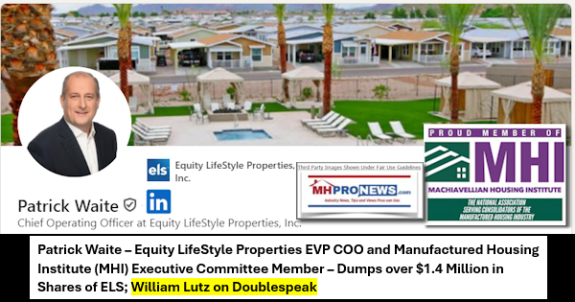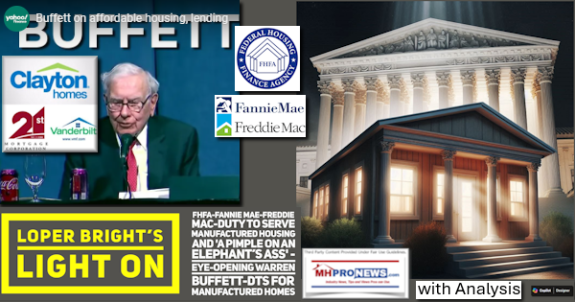Samuel Strommen said that “The aim of this paper is thus: to expose a number of antitrust violations—both blatant and subtle—in the form of the increasing monopolization of the manufacturing, financing, and the increasingly consolidating landlords, and to call for reforms within this industry.” According to his LinkedIn profile, Samuel “Sam” Strommen is an Associate Attorney with Goodsell Oviatt Law Firm in Rapid City, South Dakota. But at the time he authored the research paper entitled “The Monopolization of the American Manufactured Home Industry and the Formation of REITs: a Rube Goldberg Machine of Human Suffering,” Strommen was at the University of South Dakota Knudson School of Law. Strommen’s paper was first published on ManufacturedHomeProNews.com (MHProNews.com) on 2.1.2021. Months later, on 08.25.2021 at 3:47 pm, Strommen’s well footnoted thesis (over 130 references) was published on ManufacturedHomeLivingNews (MHLivingNews) with additional information not available at the time of the original posts. Since then, volumes of additional information have been published. Numbers of new people have entered the manufactured home industry. Those who read this Strommen’s case months or years ago can benefit from seeing it anew. Perhaps as important, MHProNews frankly plans to introduce public officials to this topic, using Strommen’s thesis and buttressing it with new insights from other attorneys and sources that emerged since Strommen didn’t have an opportunity to cover. That said, Strommen’s thesis is as or more insightful now than when it was first published. Other attorneys’ research perspectives into manufactured housing will be provided following Strommen’s.
To frame Strommen’s thesis, “A Rube Goldberg machine, named after American cartoonist Rube Goldberg, is a machine intentionally designed to perform a simple task in an indirect and overly complicated way,” says Wikipedia.
In pondering his thesis, readers may want to consider the insights gleaned from fresh research reported by the Daily Mail on the qualities experts have identified as the so-called Dark Triad.
Part I of this report will be Strommen’s thesis on “The Monopolization of the American Manufactured Home Industry and the Formation of REITs: a Rube Goldberg Machine of Human Suffering.” Part II will provide three other legal perspectives from outsiders looking in, as well as insights from an attorney inside of manufactured housing.
PART I
The Monopolization of the American Manufactured Home Industry
and the Formation of REITs:
a Rube Goldberg Machine of Human Suffering
Samuel Strommen
Antitrust & Consumer Protection
Research Paper
- Introduction
The American manufactured home, known colloquially as a mobile home, a prefab, or, most commonly, a trailer, stands alone as the most widely looked over and denigrated form of residence offered in this country today. In fact, it is the only form of residence in the United States that carries its own pejorative connotation, “trailer trash.” An apartment, on the other hand, carries no such connotation, and the utterance of the word allows the reader to envisage a full gamut of possibilities, from rundown urban projects to a posh Fifth Avenue penthouse. Likewise, a house, without context, likely inspires images of the average single-family home, with contextual connotations ranging from a squalid shanty to an opulent mansion.
The manufactured home…for tens of millions of Americans today—a great many of whom hail from the lowest socioeconomic stratum, it is a way of life, the only affordable living situation available, and the only means of achieving home ownership.
Here, in the midst of what could be declared without the merest hint of shame or irony one of the most comprehensive affordable housing gluts in American history, pernicious forces are skulking in the (backdrop): consolidating power, subsuming an industry rife with lack of oversight, and preying upon the vulnerability of the impoverished in a gross, incestuous symbiosis.
Manufacturers and financiers (oftentimes a single streamlined, vertically integrated entity) have taken advantage of, if not sold outright to their customers, a conflation of home ownership and owning a manufactured home. There is, however, a striking distinction between the two: home ownership, in the traditional sense, is to possess real property, along with all of the rights and privileges that are afforded with it. Manufactured homes, on the other hand (for reasons that will be explored later), are by and large personal property—chattels—and come with few of those same rights and protections one would find in a traditional home.
The aim of this paper is thus: to expose a number of antitrust violations—both blatant and subtle—in the form of the increasing monopolization of the manufacturing, financing, and the increasingly consolidating landlords, and to call for reforms within this industry.
Data on the manufactured home industry is scarce—very few studies that would pass any sort of academic muster have been published, and to make matters worse, much of the data appears to be obfuscated, both by the alleged bad actors as well as their critics.
Part of the problem is that manufactured homes go by a number of different aliases: colloquially, they are known as trailers or mobile homes. This is a misnomer. In 1976, the United States Department of Housing and Urban Development (HUD) released the Manufactured Home Construction and Safety Standards Code.[1] As a result, a “mobile home” is any home of the same variety manufactured before the codes were released, and a “manufactured home” is any home manufactured after [June 15, 1976].
It is unclear if modern publications, when referring to “manufactured homes” and “mobile homes” (oftentimes synonymously) are proffering data applicable to both types of homes, or just the former.
Furthermore, search results for each of the two terms tends to produce radically different results, with searches for “manufactured homes” tending to reveal more accurate, less biased data. To complicate matters, the last rigorous study of the industry by the federal government comes from a 2014 report published by the Consumer Financial Protection Bureau (hereafter CFPB),[2] an independent agency of the United States Federal Government that endeavored to gather as much information as possible about the industry: the geography, demographics, and financial data of the typical manufactured home owner and resident; and the market-share and business practices of the manufacturers. To illustrate the previous point, this report is only available by searching specifically for manufactured housing information; searching for mobile home data does not include this among its higher-ranking search results. While this CFPB report promised in its introduction to continue monitoring the industry, unfortunately, either no new report has been produced, or, if it has, is exceedingly difficult to locate. The data compiled herein is the most readily accessible and up-to-date as is available.
To fully understand the industry, it would be wise to first look towards the demographic data provided in the CFPB report. As of the time that report was published, manufactured housing accounted for some six percent of all occupied housing in the United States,[3] with some 22 million American residing in manufactured homes as their principal place of residence.4
Contrary to what major credible publications such as the Guardian5 or the Financial Times 6 state in think-pieces about the industry, the majority of manufactured home owners own both the home and the land, with about 62% of all manufactured home owners owning both the house and the land. This accounts for 48% of all manufactured home residents,7 with 30% owning just the home but not the underlying land, and another 18% renting both.8 Somewhere between 25-30% of all manufactured homes are situated in manufactured home communities9 (commonly referred to…as “trailer parks”). Manufactured homes are concentrated largely in Western and Southern States,10 and residents skew older,11 less wealthy,12 and generally less educated when compared to site-built homeowners.13
It is prudent to note, however, that simply because one owns both the home and the underlying land, that does not make the majority of manufactured homes real property, as is the case with site-built homes.14 The distinction comes from how the home itself is titled, which affects every aspect of the transaction, from the interest rates on the financing, the availability and types of financing, and the eventual appreciation and resale value.15
Even if the home owner owns both the land and the home, the likelihood that the home itself is titled as real property and not personal property is relatively slim: in 2013, the most recent year from which data is readily available, only 14% of new homes of this variety were titled as real property.16 In fact, the treatment of manufactured homes as personal—and not real—property is the default rule, with the encumbrance of additional documentation being required for it to be considered otherwise.17
The differences between real and personal property are myriad, but for the purposes of this paper, we will restrict the difference to that which is most relevant: the type of financing available. Real property, like a traditional home, qualifies for a more traditional form of financing, like a home mortgage. When a manufactured home sits on property owned by purchaser, generally both the land and the home qualify for a traditional mortgage.18 The average interest rate on a 30-year fixed-rate mortgage usually hovers around 3%, although this number can fluctuate.19
However, if the consumer wishes to place their manufactured home in a land-lease community, other land they do not own, or wish to title the home separately from the land as personal property or a “chattel,” they are only eligible for a chattel loan, the average interest rate for which is between 50 and 500 basis-points higher (around .5%-5%), depending on factors that usually affect interest rates.20 Moreover, many consumer protection laws such as the Real Estate Settlement Procedures Act (RESPA) apply only to traditional real property home loans, and not to chattel loans.21 The same is true for many state foreclosure and repossession protection laws.22 This becomes particularly injurious when it is taken into account that, despite some 48% of all manufactured home owners feasibly qualify for a traditional mortgage, only about 14% of new manufactured homes are titled accordingly.23
The United States today faces one of its greatest affordable housing crises in decades. Consumers looking for lower cost alternatives to site-built housing, particularly the thousands of retirees that are selling their site-built homes, have found, at face, manufactured housing to be an attractive, lower-cost alternative.24
However, production of manufactured homes hit its apex over twenty years ago, with a maximum production of some 375,000 units in 1998.25 For much of the past two decades, the average production has dwindled to less than 100,000 new units produced annually, in the midst of an affordable housing crisis.26 This is directly correlated to how manufactured homes are financed and securitized: in the 1990s, standards for lending in the industry were tempered, and, as a result, the quality of the loans decreased.27 As sales of manufactured homes spiked, so did their value, with financiers over-appraising the values of homes and doing whatever they could—including filing fraudulent (or at the very least misrepresentative) credit applications on behalf of consumers.28
Housing giants Freddie Mac and Fannie Mae, two Government Sponsored Entities (GSEs), were once actively involved in securitizing these loans, with Fannie Mae securitizing some 24% of all manufactured home loans in order to meet its Duty-to-Serve mandate.29 With relaxed standards, however, these loans were far from investment grade and would, by today’s standards, be considered subprime.30 And despite a once Pollyannaish outlook towards the sector, today, the GSEs today maintain minimal involvement, securitizing few loans for manufactured homes and are arguably more involved in land-lease communities. They have a very limited number of home only or chattel loans, while more are classified as real property.31
By the early 2000s, lending in the industry had gone well-beyond its event horizon, with GSEs promptly exiting after losing billions in what could in no uncertain terms be described as a subprime lending crisis.32 If the aforementioned events sound familiar, it was an almost foreshadowing of sorts to the mid-to-late 2000s subprime mortgage lending crisis, precipitated by the same factors, and reaching a similar conclusion, albeit on a significantly smaller scale. Suffice it to say, that which fails the lowest cantons of society does not augur well for America as a whole.
While the stories of how exactly Berkshire Hathaway came to acquire Clayton Homes vary depending on source, a few things remain certain: in 2003, Berkshire Hathaway purchased Clayton homes for $1.7 billion in cash.33 Today, there is perhaps no company more vertically integrated than Berkshire Hathaway and Clayton: Clayton uses almost exclusively materials that have been purchased from other Berkshire Hathaway subsidiaries.34 The paint is supplied by Benjamin Moore, the insulation is supplied by Johns Manville.35 The two predominant lenders in the industry, 21st Mortgage Corporation and Vanderbilt Mortgage and Finance are themselves both wholly-owned subsidiaries of Berkshire Hathaway as well. So, when a consumer purchases a manufactured home from Clayton Homes, Berkshire Hathaway routinely profits in some form or another at several stages.36
While claims that Berkshire Hathaway vis-à-vis Clayton Homes have violated American antitrust law have not been litigated in court, ample evidence that violations are taking place are myriad.
Buffett’s own words on his business strategy provide valuable insight into Clayton Homes’ strategy in this sector: “A good business is like a strong castle with a deep moat around it,” Buffett said on a CNBC broadcast, “I want sharks in the moat. I want it to be untouchable.”37 In this analogy, the castle would be the business he has invested in, fortified and standing safe from outside attack. The shark-filled moat is representative of the litany of additional deterrents Buffett-led Berkshire Hathaway has at its disposal to ward off nascent competitors as well as regulators.
In 2002, prior to Berkshire Hathaway’s acquisition of Clayton Homes, there were 88 manufacturers scattered across the United States.38 Today, the number has fallen to less than half that.39 A report from the now-defunct Manufactured Home Merchandiser publication indicates that in 2003, Clayton was the third largest manufactured home fabricator40 in the United States, and at that time, the top twenty-five manufacturers accounted for 78% of all home production and sales.41 Today, Clayton, Skyline-Champion, and Cavco [Industries], the top three, account for some 80% market share combined.42 Clayton alone comprises about 51% of manufactured home production.43 A series of mergers and acquisitions has made this industry increasingly consolidated.
There was a brief increase in production and shipment numbers, apparently due largely to FEMA purchases in 2005 post-Katrina, but the numbers declined following that blip [ibid]. Those numbers nonetheless correlate with that acquisition.44 The United States, again, is undoubtedly in the midst of an affordable housing crisis, and manufactured homes account for 75% of all homes sold in the United States for less than $125,000.45 Puzzlingly, while profits for the three largest players in the industry have continued to grow, the industry has yet to come close to producing as many homes as it did before Berkshire Hathaway’s acquisition.46 To make matters more troubling, intentions, both stated and inferred-by-conduct, of the industry leaders is to increase profitability not by selling more homes, but by eliminating competition.
Lori Hough, one of the vice presidents of Clayton “competitor” Skyline Champion, stated in a shareholder conference call that her company was focused principally on mergers and acquisitions as its primary method of growth.47 Moreover, since 2009, a pivotal year in the industry, Clayton itself has gone on to acquire the following companies: Schult, Crest, Karsten, Golden West, Norris, Giles, Marlette, SE, Buccaneer, A and Cavalier Homes.48 Cavco [Industries], a third member of the industry’s “Big 3” has, over the same time span, acquired Destiny, Lexington, Fairmont, Chariot Eagle, Palm Harbor, A and Fleetwood Homes.49
Clayton’s conduct here could be construed as a potential violation of Section 2 of the Sherman Antitrust Act, which states in part: “Every person who shall monopolize, or attempt to monopolize, or combine or conspire with any other person or persons, to monopolize any part of the trade or commerce among the several States, or with foreign nations, shall be deemed guilty of a felony[.]” While monopoly status has yet to be attained, Clayton’s growth over the past 17 years has been meteoric: Clayton’s market share has gone from a paltry 13.9%51 to a commanding estimated 51%.52 The number of firms they and the two other industry leaders have either acquired, merged with, or squeezed out has pushed down the total number of competitors in production-sector of the industry virtually since its inception.
In addition to potentially constituting a violation of Section 2 of the Sherman Act, this may also constitute a separate violation of Section 18 of the Clayton act, which states:
“No person engaged in commerce or in any activity affecting commerce shall acquire, directly or indirectly, the whole or any part of the stock or other share capital and no person subject to the jurisdiction of the Federal Trade Commission shall acquire the whole or any part of the assets of another person engaged also in commerce or in any activity affecting commerce, where in any line of commerce or in any activity affecting commerce in any section of the country, the effect of such acquisition may be substantially to lessen competition, or to tend to create a monopoly.”53
Here, it would appear that Clayton Homes, Cavco Industries, and Skyline Champion are doing just that: In 2003, when Berkshire Hathaway purchased Clayton Homes, Champion was the largest manufactured home builder.54 Skyline was the fifth largest, and the two companies have now merged.55 Of the top twenty-five largest manufactured home builders in 2003, Clayton itself purchased or merged with Oakwood, the fourth largest,56 Cavalier, the seventh largest,57 Southern Energy, the ninth largest,58 and Golden West, the fifteenth largest.59 Cavco at the time was the twelfth largest,60 has since merged with or acquired Fleetwood Homes, which was previously the second largest,61 Palm Harbor, the sixth largest,62 and Fairmont, the tenth largest.63 What was previously a top ten has amalgamated into a top three. What the industry has presented as apotheosis is closer to apoptosis.
While a precise history of the industry’s mergers, acquisitions, and outright failure of competition is less than perfectly discernible, it is quite clear that the year 2009 had a devastating impact on competition. It was in this year that 21st Mortgage Corporation…, a Clayton Homes sister-brand and Berkshire Hathaway subsidiary that provides financing within the industry to independent retailers, sent out a letter to its retailers indicating that it was no longer capable of finding sufficient sources to sustain their then-current levels of reliable financing. As a result, financing through 21st Mortgage was no longer going to be offered to mortgage brokers.64 Furthermore, outside of FHA-insured loans, only 21st […Mortgage] repossessions and homes built by Clayton or one of its subsidiaries would be eligible [for 21st lending]—retailers also had to be approved.65 Prior to this letter being sent, there were still 61 total manufactured housing corporations in the United States.66 Within two years, twenty-one competitors either failed, or were acquired.67 The true content of the message was made manifest not by what it said, but rather the implied consequences: capitulate to Berkshire Hathaway, or fail.68
In public, Buffett boasted through a rictus that Clayton and its financing arm were performing a good deed, saying:
“Lenders other than Clayton have come and gone. With Berkshire’s backing, however, Clayton steadfastly financed home buyers throughout the panic days of 2008-2009. Indeed, during that period, Clayton used precious capital to finance dealers who did not sell our homes. The funds we supplied to Goldman Sachs and General Electric at that time produced headlines; the funds Berkshire quietly delivered to Clayton both made home ownership possible for thousands of families and kept many non-Clayton dealers alive.”69
As has become thematic throughout the course of this paper, however, it was what was left unsaid that was more telling: shortly after this, in the midst of the subprime lending crisis, Clayton and 21st switched course. While its Vanderbilt subsidiary always appears to have been a captive lender to Clayton, this was not the case for 21st.70
The [Tim Williams/21st] letter itself appears to be another clear violation of Section One of the Sherman Act, as well as Section Three of the Clayton Act, which prohibit what is colloquially called “tying.” This section of the Clayton Act states in relevant part:
“It shall be unlawful for any person engaged in commerce, in the course of such commerce, to lease or make a sale or contract for the sale of goods…on the agreement, or understanding that the lessee or purchaser thereof shall not use or deal in the goods…of a competitor or competitors of the lessor or seller, where the effect of such lease, sale, or contract for sale or such condition, agreement, or understanding may be to substantially lessen competition or tend to create a monopoly in the line of commerce.”71
Here, Clayton [Homes and their affiliated lending] have done exactly that: from 2009 going forward, outside of loans insured by the FHA, if a retailer was going to offer 21st Mortgage financing, that financing was only going to be available for homes built by its parent company. To elaborate, in Jefferson Parish Hospital District No. 2 v. Hyde,72 and Eastman Kodak Co. v. Image Technical Serves., Inc.,73 The Supreme Court has established four elements for identifying unlawful tying arrangements:
- Whether the seller is selling two separate products that may be tied together;7[4]
- The sale or lease of an item on the condition that the buyer make all his purchases of a separate tied product from the seller;7[5]
- The seller has the market power to tie the products, i.e. “the power to force the purchaser to do something he would not do in a competitive market”;7[6]and
- A “not insubstantial amount of interstate commerce in the tied market is affected.”[7]7
Let us examine each of these elements in a vacuum, and then as an aggregate. For element one: through 21st, Clayton is selling homes and mortgages for those home[s], which are two separate products (in traditional home buying, these are rarely, if ever, tied together). For element two: in the letter, 21st stated and followed through by choking off credit to retailer[s] that did not sell Clayton homes, or for any homes the retailer sold that were not Clayton homes. For element three: the seller has inordinate market power to force retailers to accept the tying arrangement, whether they liked it or not. Finally, and most clearly, a not insubstantial amount of interstate commerce has been affected: Clayton, its subsidiaries, and its two chief competitors have functionally eradicated any serious, cognizable competitor from the industry. If the last element is met, that alone may be sufficient to constitute a per se violation of the Sherman and Clayton Acts.78
The record makes it clear: Clayton Homes and its subsidiaries, Vanderbilt and 21st, backed by Berkshire Hathaway capital, are the runaway giants in the chattel mortgage sector that dominates financing in the manufactured housing sector. Some reports indicate that they provide more financing in the manufactured housing industry by a factor of seven.79 In fact, the third largest financier in the industry is Wells Fargo.80 As it stands, 21st and Vanderbilt’s ultimate parent company, Berkshire Hathaway, is the fifth largest stakeholder in Wells Fargo.81 Prior to Berkshire Hathaway’s divestment of some 46% of its Wells Fargo shares, it was the single largest stakeholder.82 As recently as 2017, it held some 13% of Wells Fargo shares, far and away more than the next largest shareholder.83 There is even some indication that the loans Wells Fargo is making in this industry are themselves backed by Berkshire Hathaway.84 With such a suffocating control over the financial side of the industry, Berkshire Hathaway has enabled Clayton Homes to go from one of many in an industry with stiff competition to dominant force in a market it has not only vertically integrated, but is in the midst of horizontally integrating as well.
The expungement of competition has borne a demonstrably negative effect on consumers as well. Most Americans derive the majority of their net worth from the equity in their homes.85 As noted above, however, titling one’s manufactured home as a chattel not only restricts the availability of financing to usurious Berkshire Hathaway-backed loan, but chattel depreciation has a tendency to counteract the appreciation of the real property it sits on, if the consumer in fact owns both.86 In what is potentially another claim for tying under the Sherman and Clayton Acts, much like retailers, consumers are pushed to only finance through Clayton lenders.87 Other options, including traditional mortgages, may be obfuscated altogether.88 Former independent retailers have indicated they received kickbacks or discounts on their own financing for pressuring customers to take chattel mortgages through Clayton.89 Customers are [purportedly] often made to believe that it was either the best option available, or the only option available.90 This is despite the fact that some 93% of these loans have such high interest that Federal law requires additional disclosure.91 Industry consultants and experts believe that about 28% of these loans are in default.92 While courts have held that traditionally anticompetitive behavior may justify skirting antitrust law if there is an economic efficiency available to consumers,93 here, there is not.
Berkshire Hathaway and its subsidiaries’ anticompetitive behavior is quite clearly injurious to consumer, but in this matter, they are not alone. It would appear that Cavco Industries and Skyline Champion are willing [de facto allies]. An additional [possible] antitrust violation, in the form of a conspiracy under Section 1 of the Sherman Act, would at this point seem [like a] fait accompli. This section declares: “Every contract, combination in the form of trust or otherwise, or conspiracy, in restraint of trade or commerce among the several States, or with foreign nations, is declared to be illegal.”94 However, this begs the question not of the method but the mode by which the three industry leaders are using to accomplish this. The answer to that would appear to be the industry trade association, the Manufactured Housing Institute. The Manufactured Housing Institute [MHI] acts not only as the public mouthpiece of the Big 3 manufacturers (in the name of the industry) but also appears to act directly on its behalf in its various lobbying endeavors.95
In the year 2000, Congress passed the Manufactured Housing Improvement Act.96 This act authorized “enhanced preemption,” which superseded all state and municipal standards, allowing manufacturers to deliver and install manufactured homes in separate jurisdictions provided they meet HUD standards.97 In 2008, the Federal Housing Financing Authority [FHFA], under the authority of the Housing and Economic Recovery Act of 2008, implemented an expanded Duty to Serve regulation, requiring Fannie Mae and Freddie Mac to facilitate home financing for very low-, low-, and moderate-income families.98 It should follow logically, then, that it should be cheaper and easier for residents of any state to finance and acquire a manufactured home. Unfortunately, this is not the case.
There may be no greater indicator of collusion by the industry Big 3 through the MHI than HUD’s ongoing failure to implement enhanced preemption and for the [FHFA to compel the] GSEs to follow through on the Duty to Serve mandate. To call this ongoing failure a coincidence is a risible proposition: promotion of these runs contrary to the Big 3—and Clayton’s—interests in particular. The stated purpose of the GSEs is to securitize mortgages by purchasing them from lenders, packaging them together, and selling them as mortgage backed securities to investors. By alleviating lenders of the burden of having their capital tied up in loans that tend to amortize over periods of decades, liquidity—and thus allocable credit—is freed up, making credit cheap and lending competitive.
Clayton Homes [and their affiliated lenders] would suffer a detriment if [the] GSEs were to re-enter the chattel mortgage industry: it [apparently] does not need nor want capital from a large pool of investors, it accesses the capital through its parent company, Berkshire Hathaway.100 If GSEs undertook their Duty to Serve, it is hardly speculative to assert that Clayton—and Berkshire Hathaway’s—bottom lines would suffer, both from a new volume of competitors entering the market, as well as lower interest rates from more competitive lending. Accordingly, there is evidence to suggest that MHI has lobbied against any efforts that would threaten to disrupt the profitable and vertically integrated complex Clayton has developed.101 In fact, as recently as 2012, when major reforms were last announced, objections by the MHI led to manufactured housing being exempted.102
After exiting the manufactured housing market in the early 2000s, the two GSEs have yet to return in any meaningful sense.103 There are indications that the GSEs have securitized [only a limited number of manufactured home loans] in the industry since their departure after the aforementioned subprime lending crisis that occurred in the late 1990s.104 The MHVillage’s [MHInsider], which serves as an unofficial trade publication for the Manufactured Housing Institute, has heralded in several of its recent issues that the MHI has made great inroads with the GSEs, particularly in their implementation of the MHAdvantage and CHOICEHome programs. However, for the two GSEs to securitize these loans, the price range must be between $200,000-$250,000, and they must be titled as real property, [nor are] and they available to homes that will be placed in land lease communities. With a broader view of the industry in mind, these programs essentially serve no one, and certainly do not fall within the scope of the GSEs’ Duty to Serve mandate. In the same issue, Tim Williams, the same gentlemen from 21st Mortgage [and former MHI Chairman] who authored the letter that may be a violation of tying mentioned above, stated that they (Manufactured Housing Institute members) “are better suited to serve communities than GSEs.”109
Furthermore, while MHI claims to represent the industry as a whole, a look at the incestuous nature of the Big 3 and MHI make it clear whose interests are actually being represented: currently, half of the MHI executive [committee board members] are former employees of Clayton Homes.110 As mentioned above, MHI (and MHInsider) has touted programs such as MHAdvantage and CHOICEHome.111 However, these programs benefit a single new, trademarked class of manufactured housing: CrossMod™ homes.112 A cross-reference on the U.S. Patent Office’s website indicates that MHI is the holder of the CrossMod trademark.113 The only manufacturers (in principal) able to produce—and thus take advantage of programs such as MHAdvantage and CHOICEHome are [essentially] MHI members.114 It would appear that MHI’s lobbying efforts are done less to serve the industry as a whole, but rather to keep competitors—and consumers—from accessing competitive rates on lending if the Duty to Serve were properly implemented.
MHI’s relationship with HUD and the GSEs is no secret: most recent issues of MHVillage[’s MHInsider] touts some form of progress.115 And yet, only a few loans for this new class of home have been securitized by GSEs.116 MHIs lobbying of the FHFA, or for that matter HUD, seems to invariably result in in policies that either benefit the Big 3, or at the very least, mitigate detriment. The outcome of these lobbying efforts is stultifying at best, and an abject failure at worst.
For as heavily as MHI has promoted CrossMod™ homes, sales appear to be stagnant, particularly when demand in the sector remains focused on traditional manufactured housing.117 This begs the question: when lobbying [FHFA on the Duty to Serve], was MHI acting in good-faith? The U.S. Supreme Court has held in Eastern Railroad Presidents’ Conference v. Noerr Motor Freight Inc.,118 and United Mineworkers v. Pennington119 that the use of governmental processes such as lobbying or litigating by private [enterprise] is covered by the First Amendment right to free expression and the right to petition. That right extends even if the use of said processes is done to achieve an anti-competitive purpose that would otherwise be unlawful under antitrust law. The famous Noerr-Pennington doctrine is not without exceptions, however. In California Motor Transport Co. v. Trucking Unlimited, the Court identified that there is a “sham” exception to the doctrine’s protections.112 While the Court has never elucidated what exactly constitutes a sham, it is essentially an attempt to disguise the anticompetitive, purely business-related behavior as political—antitrust legislation is designed, after all, to regulate the sphere of business alone.
The Federal Trade Commission published a guide for regulators in 2006 that serves to elaborate on what is—and is not—protected by the Noerr-Pennington doctrine.123 The document outlines three activities that constitute a sham within the Noerr-Pennington context: filings that seek only a ministerial response,124 misrepresentations,125 and repetitive petitioning.126 Of these, MHI’s behavior, if indeed done to mislead or defraud the government, most closely resembles the misrepresentation exception. The deciding factor as to whether misrepresentations are afforded Noerr protection is if they are done to achieve a specific political outcome, even if that outcome is anticompetitive, or if there is an abuse of the process itself to hinder competition.127 In its Union Oil Co. of Cal. (Unocal) opinion, the FTC identified three elements for a petitioning or lobbying effort to lose Noerr protection: the representation must be (1) deliberate,128 (2) subject to factual verification,129 and (3) central to the legitimacy of the affected governmental proceeding.130
The author of this paper submits that the MHI’s conduct in obfuscation judicious decision-making by the [FHFA and HUD] constitutes a conspiracy to restrain trade under Section 1 of the Sherman Act, and by virtue of the misrepresentative nature of the conduct, should not be afforded Noerr protection. The intent of the MHI to influence [FHFA and] HUD to act in a particular way, or omit to act in a certain way, would be protected—however, the chief misrepresentation is that lobbying efforts are representative of an industry and not a select few companies. The data supplied to governmental officials is likely erroneous,131 and the attempts by the MHI to obtain governmental intercession on the industry’s behalf is likely a ruse.
Under Noerr, if obtaining securitization of loans for CrossMod™ homes is in fact MHI’s desired political outcome, its lobbying efforts to support that would be protected under the First Amendment. However, this would appear to be a strategy not dissimilar to the old cup-and-ball trick: a misdirection by MHI at the behest of its principal benefactors—the Big 3—an act of skillful subterfuge to misdirect the government in one area, allowing the Big 3 to engage in anticompetitive in another area unabated. This is supported by more than simple inference: industry leaders have lauded GSEs failure,132 sales of CrossMod™ homes remain far below that of traditional manufactured homes,133 and that seemingly every time reform in the industry or intrusion by GSEs is proposed, in nearly the same breath it vanishes.
The manufactur[ing] and lending sectors of the industry are rife with potential antitrust violations, from the Sherman Act, to the Clayton Act, to potential violations of the Noerr-Pennington Doctrine. It is clear that the Federal Trade Commission and United States Department of Justice should investigate these companies. The American consumer can ill-afford to pretermit manufactured housing as a viable option in the midst of an affordable housing crisis. Traditional site-built homes have continued to increase in price since the mid-2000s subprime mortgage crisis, and industry experts are predicting that the joblessness caused by the COVID-19 pandemic will fuel a second foreclosure crisis in America. Clayton Homes, et al. have gotten demonstrably more profitable. Why has manufacturing yet to cross the 100,000 unit threshold, much less come anywhere close to its most recent 1998 peak? ##
—————————————————————————-
[Editor’s Note: The footnotes by Strommen from the above are as shown below.
Note that the two … above reflects edits on apparent typos on Berkshire Hathaway (BRK) owned
21st’s corporate name 21st Mortgage Corporation. Other minor edits are shown by brackets but only to clarify Strommen’s apparent meaning, and not to change it.]
[1] 42 U.S.C. §5402
2 U.S. Consumer Financial and Protection Bureau, Manufactured-Housing Consumer Finance in the United States (2014), available at https://files.consumerfinance.gov/f/201409_cfpb_report_manufactured-housing.pdf.
3 Id., at 6.
4 Industry Trends & Statistics, MHInsider (July 2020), at 38, available at https://www.mhvillage.com/pro/print/july-august-2019/.
5 Rupert Neale, America’s Trailer Parks: The Residents May Be Poor but the Owners Are Getting Rich, The Guardian, May 3, 2015, available at https://www.theguardian.com/lifeandstyle/2015/may/03/owning-trailer-parks-mobile-home-university-investment.
6 Rana Foroohar, Why Big Investors Are Buying Up American Trailer Parks, Financial Times, Feb. 7, 2020, available at https://www.ft.com/content/3c87eb24-47a8-11ea-aee2-9ddbdc86190d.
7 CFPB, supra note 2, at 21.
8 Id.
9 Id.
[10]0 Id. see Figure 1: Manufactured Housing Share of Occupied-Housing Units, by State.
[11] Id., see Figure 3: Head-of-Household Age Distribution.
[12] Id., see Table 3: Selected Family Financial Characteristics by Type of Housing.
[13] Id., see Table 2: Highest Level of Educational Attainment by Residents Ages 25 or Older in Owner-Occupied Households.
[14] Id., at 6.
[15] Id. at 23.
[16] Id.
[17] Id. at 10.
[18] Jeff Ostrowski, 30-Year Interest Rates, Nov. 9, 2020, available at https://www.bankrate.com/mortgages/rates/30-year-rates-for-monday-november-9-2020/.
[19] J.B. Maverick, The Most Important Factors that Affect Mortgage Rates, Jun. 25, 2019, available at https://www.investopedia.com/mortgage/mortgage-rates/factors-affect-mortgage-rates/
20 CFPB, supra note 2, at 6.
21 Id. at 24.
22 Id.
23 CFPB, supra note 16.
24 See graphic download linked here: https://www.manufacturedhomepronews.com/wp-content/uploads/2020/11/ManufacturedHousingMarketDataProductionShipmentsComparisonsToConventionalHousingRentalsNationalAssocRealtorsScholasticaGayCororatonMHProNewsInfographic.jpg
25 CFPB, supra note 3, at 26.
26 MHVillage, supra note 4.
27 CFPB, supra note 3, at 26.
28 Id.
29 Id. at 28.
30 Id. at 6.
31 Id. at 37.
32 Id.
33 The prevailing public narrative is that Mr. Buffett sought ought Clayton, but this is subject to dispute. The Berkshire Hathaway acquisition of Clayton Homes for $12.50 a share was met with a shareholder lawsuit. Investors thought the industry had already hit its nadir and was in the process of rebounding, rendering the offer from Berkshire Hathaway too low. It was alleged that a local bank under-valued the company, and that independent advisors pegged the worth between $15.80 and $17.20 a share. It was subsequently alleged that the Claytons’ were “speaking out of both sides of their mouths,” telling Berkshire Hathaway the positive position of both the company and the industry, all-the-while telling investors how bad things were. See Jennifer Reingold, The Ballad of Clayton Homes, Fast Company, Jan 01, 2004, available at https://www.fastcompany.com/48214/ballad-clayton-homes.
34 Financial Times, supra note 6.
35 Id.
36 Id.
37 This quote and variations are found in abundance. It has also been repeated by Clayton CEO and namesake Kevin Clayton on a number of occasions. Mr. Clayton’s reasons for favoring this strategy, and perhaps targeting Berkshire Hathaway (supra note 33) will become clear later in the paper. See Tae Kim, Warren Buffett Believes This Is ‘the Most Important Thing’ to Find in a Business, CNBC, May 7, 2018, available at https://www.cnbc.com/2018/05/07/warren-buffett-believes-this-is-the-most-important-thing-to-find-in-a-business.html.
38 CPFB, supra note 3, at 39.
39 This is taken from the 2014 CFPB report. More recent data is not currently available. Id.
40 A huge debt of gratitude is owed by the author of this paper to the author of the article linked. L. A. “Tony” Kovach, Clayton Homes, Skyline Champion, Cavco Industries, Other Leading HUD Code Manufactured Housing Industry Market Share Data, Jun 24, 2020, MHProNews, available at https://www.manufacturedhomepronews.com/clayton-homes-skyline-champion-cavco-industries-other-leading-hud-code-manufactured-housing-industry-market-share-data/.
41 Id.
42 Id.
43 As Mr. Kovach duly noted, the discrepancies between the market share reported both by Clayton Homes itself, as well as the official figures presented by the Manufactured Housing Institute. This speaks to a level of potential collusion that will be addressed below. [Kovach cited Statistical Surveys, an independent research firm, for the most accurate known market-share data.] Id.
44 See https://www.manufacturedhomepronews.com/manufactured-housing-comparisons-data-sets-vs-existing-and-new-single-family-housing-sales-rvs-auto-facts-potent-insights-for-mh-professionals-investors and https://www.manufacturedhomelivingnews.com/affordable-housing-needed-corporate-corruption-and-manufactured-homes-time-to-get-federal-officials-fully-involved.
45 Jennifer Brown and Kevin Simpson, Mobile Home Parks Move from Mom-and-Pop to Corporate, Sept. 16, 2019, Associated Press, available at https://apnews.com/article/de31aa729f514f48b934bf23ebd3f641.
46 See Figure 1. L. A. “Tony” Kovach, Prima Facie Cases Against Manufactured Housing Institute, Richard A. ‘Dick’ Jennison, Tim Williams, 21st Mortgage, Kevin Clayton, Tom Hodges – Clayton Homes, Et Al, MHProNews, Jan 7, 2020, available at https://www.manufacturedhomepronews.com/masthead/prima-facie-cases-against-manufactured-housing-institute-richard-a-dick-jennison-tim-williams-21st-mortgage-kevin-clayton-tom-hodges-clayton-homes-et-al/.
47 Motley Fool Transcribers, Skyline Champion Corp (SKY) Q3 2020 Earnings Call Transcript, Jan 29, 2020 available at https://www.fool.com/earnings/call-transcripts/2020/01/29/skyline-champion-corp-sky-q3-2020-earnings-call-tr.aspx.
48 MHProNews, supra note 46.
49 It is also worth noting that Cavco Chairman and CEO Joe Stegmayer and Cavco under under investigation by the securities and exchange commission. Source for data may be found supra note 46, information on the Cavco investigation may be retrieved here https://sec.report/Document/0000278166-20-000066/.
50 15 U.S.C. § 2.
51 MHProNews, supra note 40.
52 Id.
[53] Within the ascribed meaning and definition of the Act, “person” includes “corporation.” 15 U.S.C. § 18.
54 It is important to note that it is unclear how the companies in the following footnotes came together, if by merger, acquisition, or some combination of both. MHProNews, supra note 46.
55 Id.
56 Id.
57 Id.
58 Id.
59 Id.
60 Id.
61 Id.
62 Id.
63 Id.
64 MHProNews, supra note 40.
65 This is retrieved from MHProNews, supra note 40, but also corroborated by the CFPB study mentioned, supra note 3 at 14.
66 L. A. “Tony” Kovach, Bridging Gap$, Affordable Housing Solution Yields Higher Pay, More Wealth, But Corrupt, Rigged Billionaire’s Moat is Barrier, MHLivingNews, (article undated), available at https://www.manufacturedhomelivingnews.com/bridging-gap-affordable-housing-solution-yields-higher-pay-more-wealth-but-corrupt-rigged-billionaires-moat-is-barrier/.
67 It would also appear this is a separate violation of 15 U.S.C. § 14 infra note 71. Id.
68 While it is outside the scope of this paper to explore or analyze at length, it has been alleged that this may constitute a predicate offense of the Racketeer Influenced and Corrupt Organizations Act, 18 U.S.C. § 1961.
69 Warrant Buffett, Annual Shareholder Letter, 2015, at 17, Feb. 27, 2016, available at https://www.berkshirehathaway.com/letters/2015ltr.pdf.
70 Moody’s Assesses Vanderbilt Mortgage and Finance, Inc. as ‘Average’ Originator of Residential Conventional Manufactured Home Loans, Feb. 28, 2011, available at https://www.moodys.com/research/Moodys-Assesses-Vanderbilt-Mortgage-and-Finance-Inc-as-Average-Originator–PR_214886.
71 15 U.S.C. § 14.
72 Jefferson Parish Hosp. Dist. No. 2 v. Hyde, 466 U.S. 2.
73 Eastman Kodak Co. v. Image Tech. Servs., 504 U.S. 45.
74 Id. at 462.
75 Id. at 488.
76 Id.
77 Supra note 72, at 8.
78 Id. at 23.
79 Kori Hale, Warren Buffett’s Exploitative Mobile Home Investment, Forbes, Apr. 18, 2019, available at https://www.forbes.com/sites/korihale/2019/04/18/warren-buffets-exploitative-mobile-home-investment/?sh=2c33848b1507.
80 Daniel Wagner & Mike Baker, Warren Buffett’s Mobile Home Empire Preys on the Poor, Center for Public Integrity, Apr. 6, 2015, available at https://publicintegrity.org/inequality-poverty-opportunity/warren-buffetts-mobile-home-empire-preys-on-the-poor/.
81 Wells Fargo & Company (WFC) Top Institutional Holders, Nov. 3, 2020, available at https://finance.yahoo.com/quote/WFC/holders?p=WFC.
82 Theron Mohamed, Warren Buffett’s Berkshire Hathaway Cuts Wells Fargo Stake to 17-year Low, Business Insider, Sep. 7, 2020, available at https://markets.businessinsider.com/news/stocks/warren-buffett-berkshire-hathaway-cuts-wells-fargo-stake-17-years-2020-9-1029566739.
83 Id.
84 Get source.
85 Scott Burns, Americans Love Their Homes – Maybe Too Much, Dallas Morning News, Nov. 13, 2020, available at https://www.dallasnews.com/business/personal-finance/2020/11/13/americans-love-their-homes-maybe-a-little-too-much/.
86 CFPB supra note 3, at 25.
87 CPI, supra note 80.
88 Id.
89 This article cites an interview with Kevin Carroll, a former owner of a Clayton-affiliated dealership who described receiving discounts on his own business loan, which was financed by Clayton Homes, for steering customers to work only with 21st Mortgage. Id.
90 Id.
91 Ninety-nine percent of these loans also had such high interest as to warrant placement in the Federal Government’s “higher-priced mortgage loan” (HPML) status required under 12 U.S.C. § 2801. Id.
92 This figure is highly disputed. Warren Buffett alleged this rate was a mere 3%, but that figure is measuring the total number of failed loans Clayton originated in a single year, not the total number of defaulted loans in the portfolio. See Mike Baker & David Wagner, Buffett’s Mobile-Home Company He Controls Made Record Profits Last Year While Foreclosing on More Than 8,000 Customers, Seattle Times, Feb. 29, 2016, available at https://www.seattletimes.com/seattle-news/times-watchdog/buffetts-mobile-home-empire-makes-record-profits-while-foreclosing-on-8444-homes/.
93 Rothery Storage & Van Co. v. Atlas Van Lines, Inc., 792 F.2d 210.
94 15 U.S.C. § 1.
95 Also note the progressive increase in money spent by the MHI on lobbying efforts after Berkshire Hathaway’s acquisition of Clayton Homes in 2003. Client Profile: Manufactured Housing Institute, Center for Responsive Politics, Nov. 12, 2020, available at https://www.opensecrets.org/federal-lobbying/clients/summary?cycle=2020&id=D000000458.
96 42 U.S.C. § 5401.
97 Id.
98 12 U.S.C. § 4565
99 Gerald Lins, Marie Picard, & Thomas Lemke, Mortgage Backed Securities, 2013.
100 Doug Ryan, Time to End the Monopoly Over Manufactured Housing, American Banker, Feb. 23, 2016, available at https://www.americanbanker.com/opinion/time-to-end-the-monopoly-over-manufactured-housing.
101 Juliet Eilperin, A Once Obscure Office at HUD is the Subject of an Unusually Intense Lobbying Effort, Washington Post, May 1, 2018, available at https://www.washingtonpost.com/politics/a-once-obscure-office-at-hud-is-the-subject-of-unusually-intense-lobbying-effort/2018/04/30/3dfc7ba0-3841-11e8-acd5-35eac230e514_story.html.
102 CPI, supra note 80.
103 CFPB, supra note 28.
105 There is substantial overlap between MHI directors and MHInsider magazine editors. Supra note 4, at 28.
106 Id.
107 Bear in mind that only 14% of loans for manufactured homes are titled as real property, even though a far larger number may be eligible. Id.
108 Id.
109 Id. at 56.
110 Note that, beyond the Chairman and Treasurer, another 5 board seats are held by Big 3 members, with the rest constituted mostly of state-level affiliate directors or REIT representatives. Manufactured Housing Institute, MHI Board of Directors, Nov. 12, 2020, available at https://www.manufacturedhousing.org/board-of-directors/.
111 Supra note 4.
112 Id.
113 U.S. Trademark Application Serial No. 88/497,913 (filed Feb. 7, 2019).
115 MHVillage, supra note 4. See also: https://www.mhvillage.com/pro/print/ for online sources of print editions.
116 Renan Cunha, Manufactured Housing Securitization, Duke Journal of Economics, Oct. 14, 2016, available at https://sites.duke.edu/djepapers/files/2016/10/renan-cunha-dje.pdf.
117 Id. at 6.
118 Eastern Railroad Presidents Conference v. Noerr Motor Freight, Inc., 365 U.S. 127 (1961).
119 United Mine Workers v. Pennington, 381 U.S. 657.
120 Id.
121 Id.
122 California Motor Transport Co. v. Trucking Unlimited, 1971 U.S. LEXIS 1810
123 FTC, Enforcement Perspective on the Noerr-Pennington Doctrine, 2006, available at https://www.ftc.gov/sites/default/files/documents/reports/ftc-staff-report-concerning-enforcement-perspectives-noerr-pennington-doctrine/p013518enfperspectnoerr-penningtondoctrine.pdf.
124 Id. at 4.
125 Id. at 4.
126 Id. at 4.
127 Id. at 22.
128 Id. at 25.
129 Id. at 25.
130 Id. at 25.
131 L. A. “Tony” Kovach, FHFA, GSEs—High Cost to Minorities, All Americans—Due to Asserted Failures to Follow Duty to Serve Affordable Housing, Existing Federal Laws, Manufactured Home Living News, Dec. 11, 2019, available at https://www.manufacturedhomelivingnews.com/fhfa-gses-high-cost-to-minorities-all-americans-due-to-asserted-failures-to-follow-duty-to-serve-affordable-housing-existing-federal-laws/.
###
Part II
In addition to these thoughts from Strommen’s research are the following items from three other attorneys whose research and observations were published in the first part of 2023. MHI leaders were asked to respond to these bullets and to Strommen’
- 1) ‘Frustration and Hope’ – Law Prof Fran Quigley Slams Frank Rolfe and ‘Wall Street Holding a Gun to Mobile Home Residents’ Heads’ – Statements, Apt Manufactured Home Facts, and Expert Analysis Apparently, per sources, MHI has not acted against any of its own members who have apparently failed to uphold your own so-called Code of Ethical Conduct? If there has been any such action, please show evidence of it.
- 2) Andrew Justus’ op-ed in The Hill begs for enhanced preemption to be deployed as a response, doesn’t it?
- 3) A similar point could be made about the next attorney and his thesis. Perhaps as or more embarrassing to MHI are the remarks by law professor Daniel R. Mandelker in a paper on barriers to manufactured housing argued starting is his abstract that: “A support organization is needed that can provide litigation and legislative support to help manufactured housing advocates with zoning reform. Statutory reform proposals for legislative change should be included in local zoning ordinances.” Ironically, that’s what MHI claims it is doing. Apparently, they are doing it so badly that Mandelker didn’t realize that MHI even makes that claim. Ouch. Obliquely, Mandelker supports Strommen’s thesis above.
Those attorneys above are from outside of the manufactured home industry. Another attorney from inside manufactured home industry is Mark Weiss, J.D. Some of his thoughts on the manufactured housing industry’s ‘self-inflicted wounds’ are found at the link below.
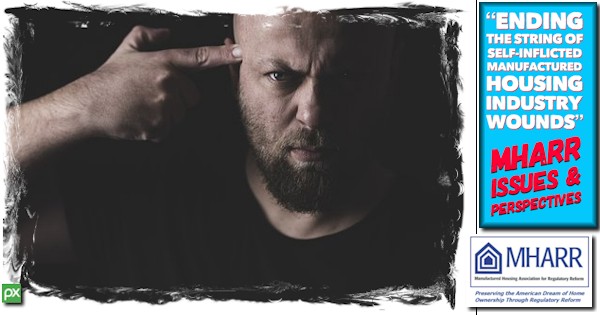
That said, consider the latest industry data in the report linked below. Keep in mind that during that same time period, more costly conventional housing experienced a rise.
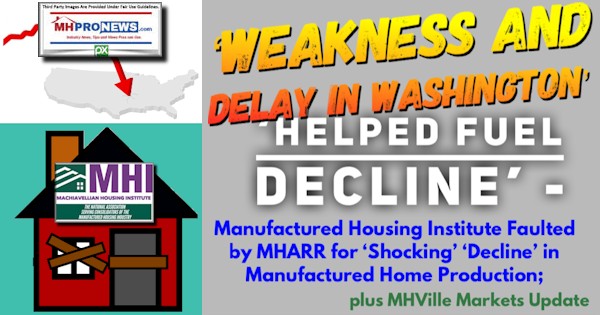
Yet another attorney in a communication with MHProNews said that the statue of limitations for an offense, if it is part of an ongoing conspiracy, does not begin to run until the final offense in that conspiracy occurs. MHProNews did some research on that assertion, and found this from the U.S. Department of Justice (DoJ) website.
Notice: the graphic below can be expanded to a larger size.
See the instructions below the graphic below or click the image and follow the prompts.
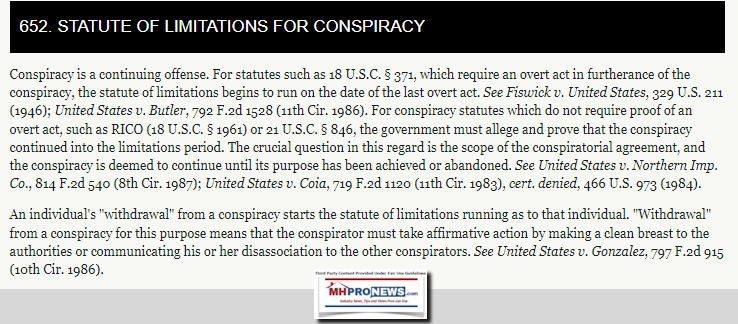
To Strommen's point that what he is alleged is a felony violation of the Sherman Act, the following is useful.
Notice: the graphic below can be expanded to a larger size.
See the instructions below the graphic below or click the image and follow the prompts.
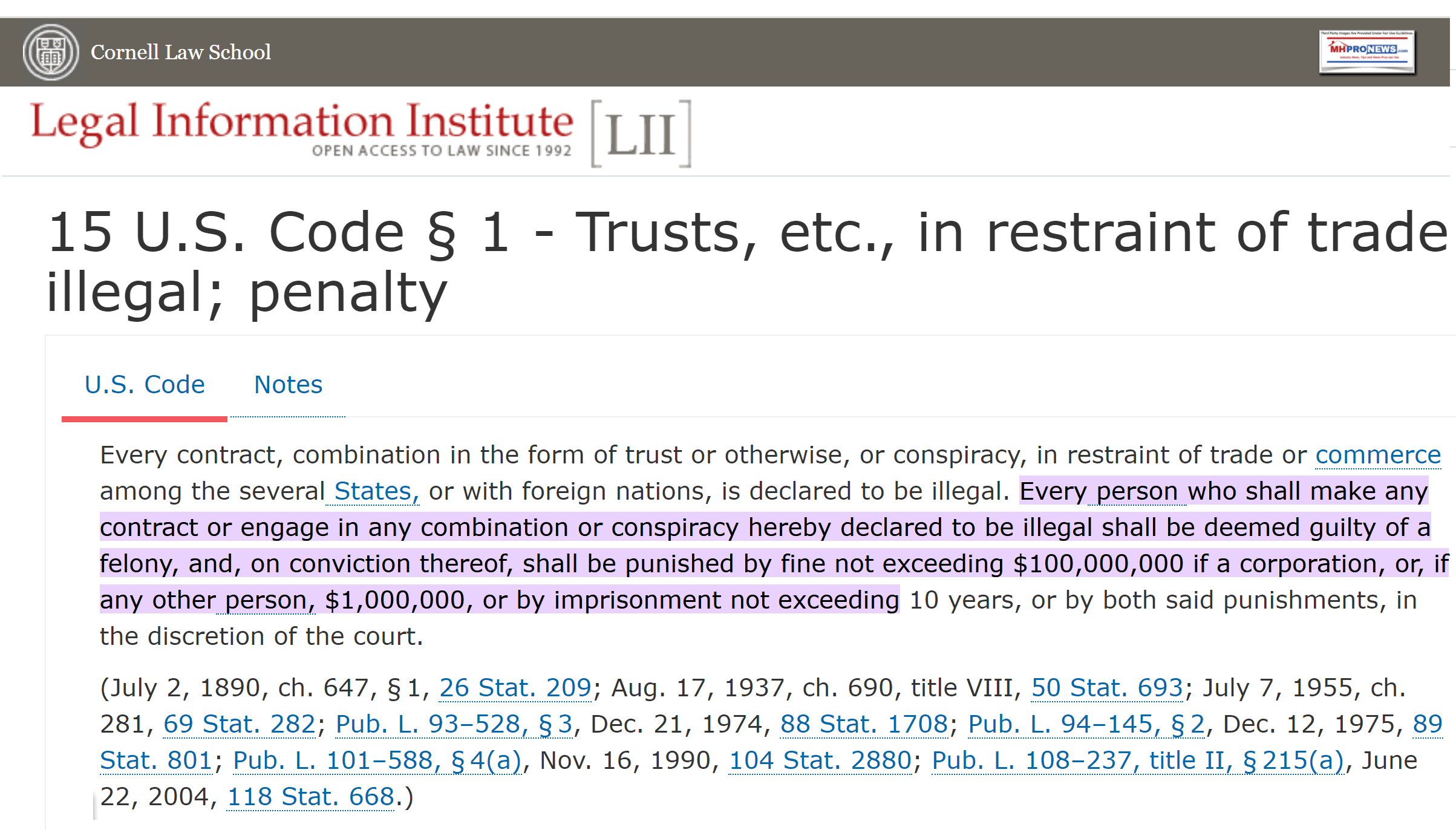
James A. "Jim" Schmitz Jr., a senior economist with the Minneapolis Federal Reserve notes that there are also outside forces that are colluding to limit manufactured housing. But his thesis notes that insiders benefit from that collusion.
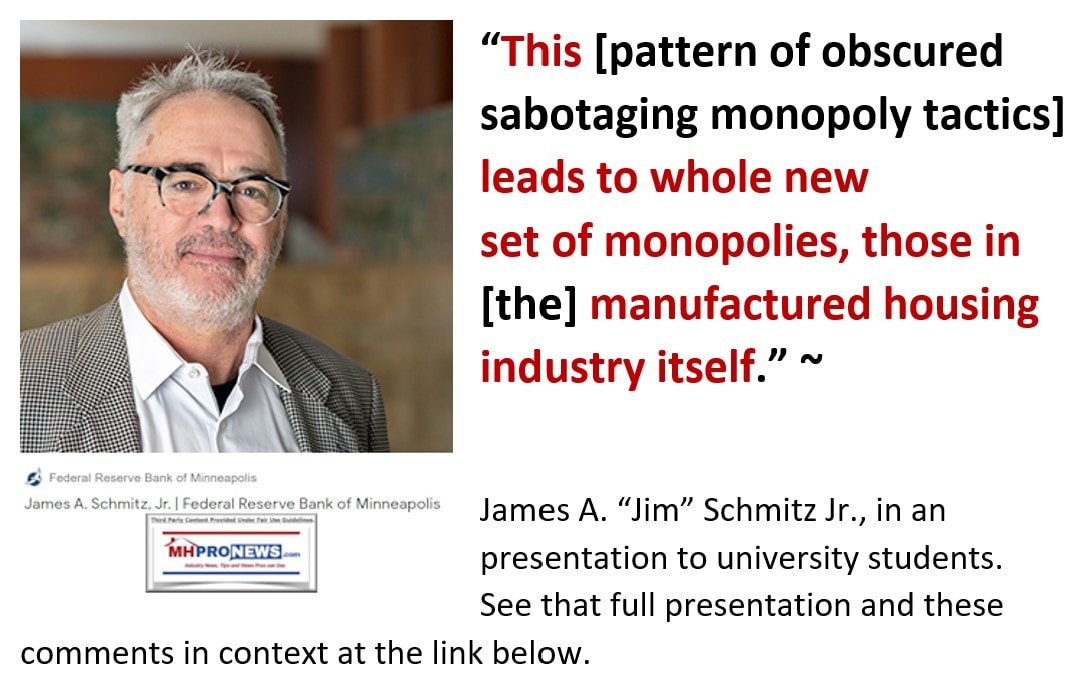
To buttress his arguments Schmitz used production data. The graph below is illustrated by MHProNews, but it makes some of Schmitz's arguments - and those of Strommen, et al - plainer.
Notice: the graphic below can be expanded to a larger size.
See the instructions below the graphic below or click the image and follow the prompts.
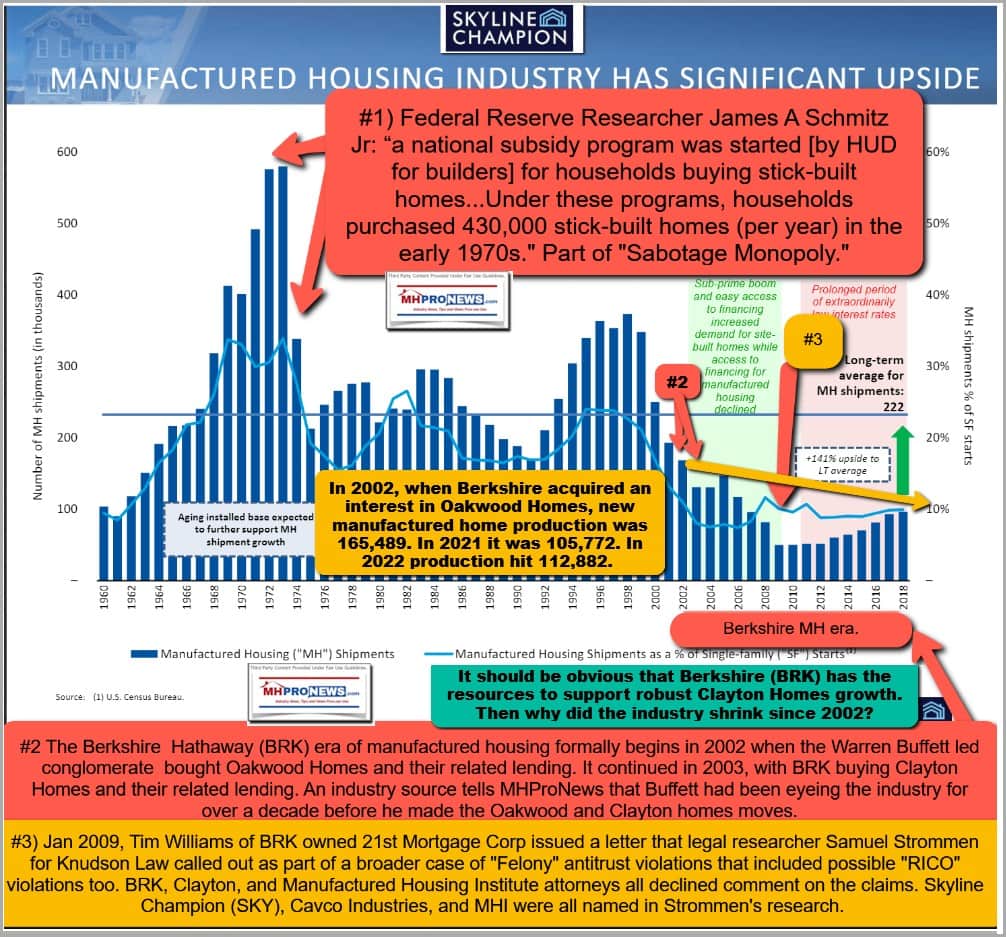
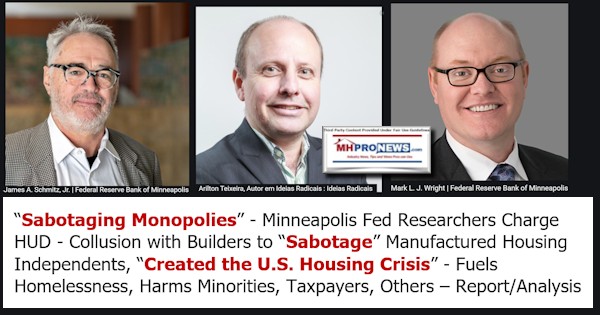
Notice: the graphic below can be expanded to a larger size.
See the instructions below the graphic below or click the image and follow the prompts.
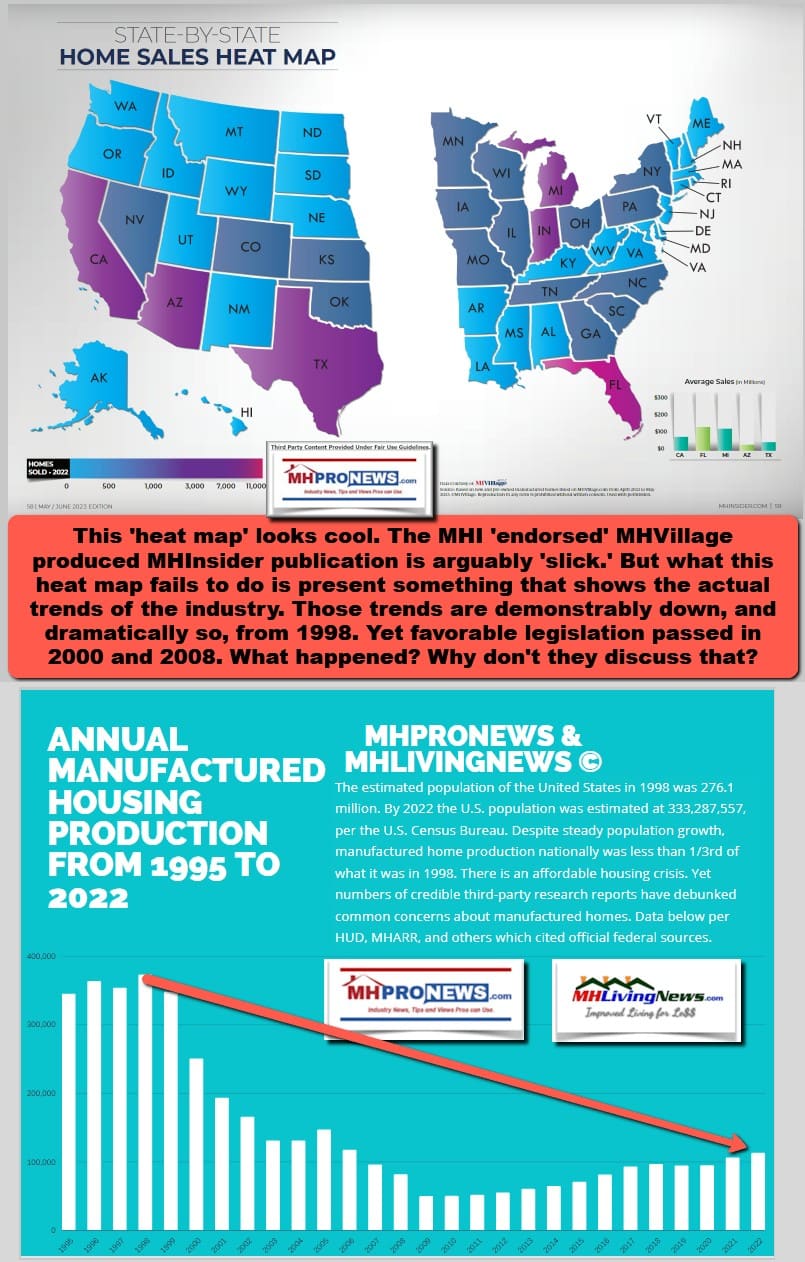
Notice: the graphic below can be expanded to a larger size.
See the instructions below the graphic below or click the image and follow the prompts.
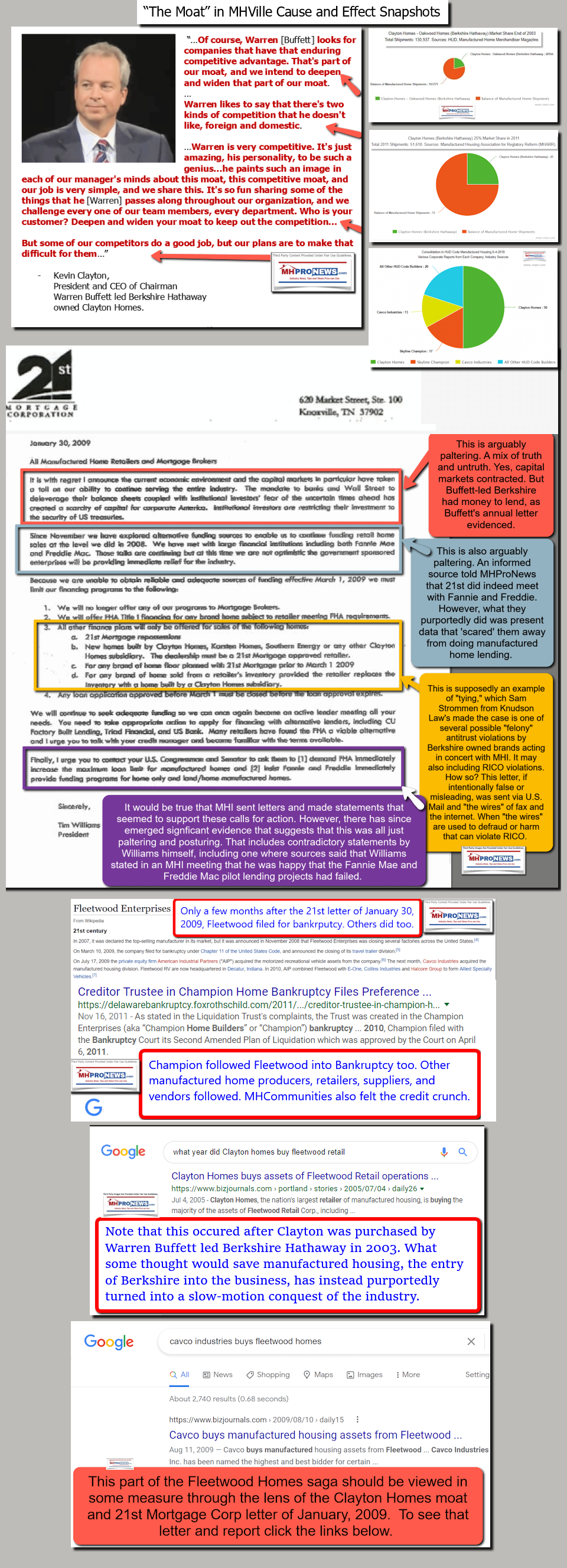
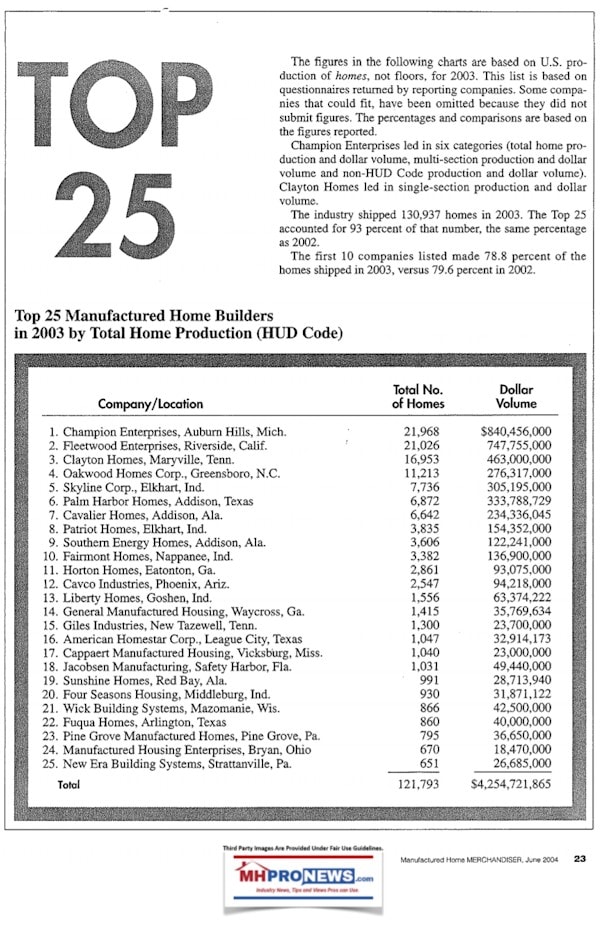
Politicians from both major parties have said that the American system is rigged. If the U.S. system is rigged, that begs the question. How badly is the system in manufactured housing rigged? How much impact or harm has been done in manufactured housing as a result of these evidence-based claims of antitrust and RICO law violating behaviors? For some examples, look at what Kevin Clayton, CEO of Berkshire Hathaway (BRK) owned Clayton Homes said in remarks to Congress while speaking on behalf of the Manufactured Housing Institute (MHI). These remarks below are found in their full context here.
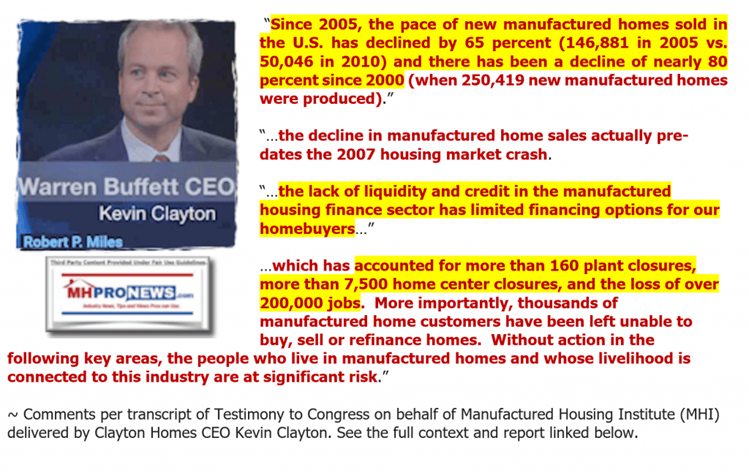
But there are reasons to believe that those 7,500 lost retail centers that Kevin Clayton spoke about, per his own testimony, may actually be far greater than claimed. Some context and sources are useful.
Close to a decade ago, Kevin Clayton said in the video interview posted at the link below and here that Clayton Homes had in 2011 some 450 company owned retail centers (a.k.a. "dealerships"). Based on Clayton's own 2021 annual report, they finished that year with "364 Clayton home centers. 2,768 Clayton Homes Retail team members.” So, based on their own claims, the firm has quietly closed a net 19 percent of their retail locations in 10 years. But it is worse that that, because Clayton Homes has a de facto program where they offer to convert an independent retailer of Clayton Homes into a manufactured home retailer owned by Clayton. It may take some organization with subpoena powers to find out how often that has happened, but this writer knows of several instances where that happened. Now, are we to believe that during an affordable housing crisis, after Kevin has bragged that Buffett could give Clayton whatever it needs in the way of capital support that Clayton Homes can't successfully keep open their dozens of their own retail centers? Why weren't they expanding retail vs. closing them? Where there instances that an independent retailer was purchased and then another unit closed nearby? By the way, according to a source with knowledge, Clayton doesn't pay much to those whose retail centers are purchased. The reason some say yes, is because Clayton explains to the independent that if they become Clayton owned, they will have access to Berkshire owned Vanderbilt Mortgage and Finance (VMF) financing, a captive lender for Clayton retail. Berkshire also owns 21st Mortgage Corp, which is the largest lender in the country, per federal data reported by the Consumer Financial Protection Bureau (CFPB). Indeed, 21st and VMF are the two largest lenders in manufactured housing, according to the CFPB.
Back to the total number of U.S. manufactured housing retailers lost, a former retailer that is pro-MHI - Ken Corbin - said at the Deadwood conference in 2017 that there had been 10,000 retailers lost. But some believe that the actual number lost since the turn of the century is about 20,000 nationally. As retailers fall, Clayton's and Berkshire's influence at the state association level grows. Who said? A Manufactured Housing Executives Committee (MHEC) state executive who informed MHProNews and others that in one state 60 percent of the retail base had vaporized in just 7 years. That is roughly the timeframe following Kevin Clayton's remarks to Congress.

Until 2018, Clayton surged from about 21.5 percent of the market share in 2003 (after Berkshire combined Clayton with their previous investment with Oakwood Homes) to 50 percent. Once the GSEs eliminated manufactured home chattel lending, and with MHI successfully keeping the GSEs out while posturing otherwise (see Strommen and the reports linked below), the steady attrition of the retail base occurred.
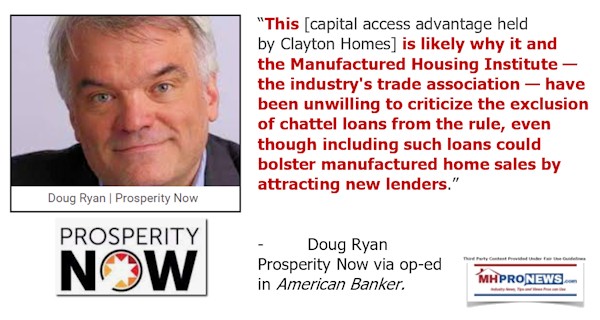
Restated, there is no lack of evidence that numerous possible antitrust violations have occurred, which includes what Strommen called Clayton's de facto allies in this purported scheme. The Securities and Exchanges Commission's (SEC) suit against former Cavco Industries (CVCO) president and CEO, Joseph "Joe" Stegmayer, yielded more evidence of how this pernicious abuse of the system has occurred. The SEC pleadings read a bit like a corporate spy novel. Stegmayer was a former Clayton Homes division president. Stegmayer was also a former MHI chairman.

Speaking of reality that reads like a corporate spy novel. Spying (research) is allegedly part of the pattern, as informed sources have told MHProNews that 21st at various times holds much of the floor plan (wholesale, inventory financing) for independent retailers. In essence, factory (Clayton) and finance (21st) reps that go to independent retailers learn information and report back. Something similar is likely occurring with other members of the Big Three. Files are maintained on the bulk of manufactured housing industry independents.
For the understanding of public officials, media, attorneys, educators, and other possible researchers into the mystery of manufactured housing's underperformance during an affordable housing crisis, a few comments should be made. As useful as the insights of Strommen and Schmitz are, they are not perfect. That said, the thrust of their arguments are well reasoned and well supported by evidence. There is only so much that an outsider is likely to learn, especially in the case of Strommen, where he had a deadline to complete his research thesis. Both ought to be forgiven for minor glitches and commended for the thrust of their reasoning. And thanks to their respective work, when compared with other sources cited herein, a vivid picture begins to emerge that begs the question. How is it possible that this scheme has escaped the notice of public officials for so long?
The answer is it hasn't.
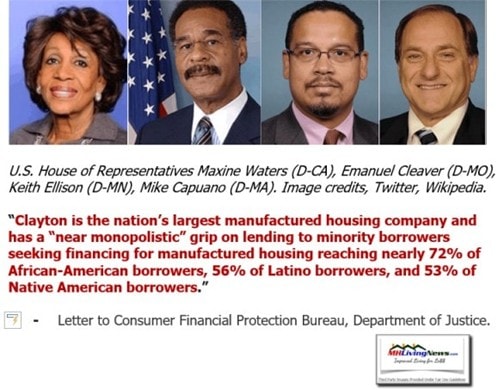
When DoJ and the CFPB are asked about that referral, there is a deafening silence. When this writer submitted detailed to federal agencies during the Biden era, there has been silence. This is despite the fact that Biden's team supposedly has tough antitrust enforcers. Seriously?
During the Trump Administration, two sources asserting knowledge told MHProNews that a meeting was held to discuss possible antitrust action against Clayton Homes. What occurred? It is difficult to say, because President Trump yielded office to Joe Biden. Changes at DoJ and the FTC were made. Is there favoritism being played on behalf of Buffett, given that he and his Vice Chairman Charlie Munger are both well known as a Democratic supporters?
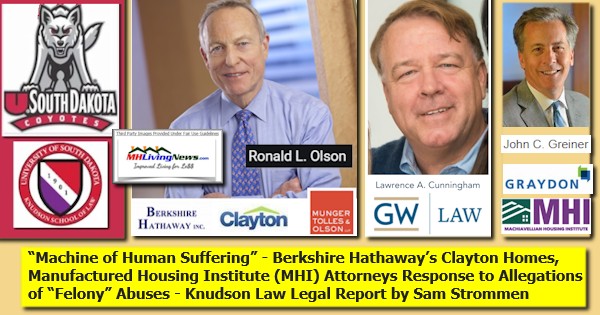
To be as accurate and nonpartisan as possible, this writer spoke with two antitrust attorneys in two different 'red states.' Each said the evidence presented was compelling. One said that based on her Q&A with me and the information that was submitted, she saw other possible legal violations beyond antitrust and RICO. That said, if there is forward motion, there is no public hint of it.
When public officials are faced with allegations involving multiple companies that are MHI members, and when the collective resources available to those firms is measured in the hundreds of billions of dollars, even an 8+ figure legal defense may be daunting to a state or federal agency. But that only means that there is indeed a two-tiered system of justice. The flip side of the argument is that those deep pocketed firms, if beaten, can potentially yield enormous sums of money to public and/or private suits.
Among the ripple effects of finding 'weaknesses' in the system that can be exploited, as Bill Gates' remarks about Warren Buffett indicated, is that the loss of retailers also meant the loss of homes entering into land-lease communities which in years past were sold by manufactured home retailers. When once successful retailers were lost by the thousands, a slow but steady decline occurred in thousands of land-lease communities across the nation. That meant that mom and pop owned communities came onto the market and for a time were available at discounted valuations. After those communities were acquired, often by so-called predatory brands operating in manufactured housing that were often MHI members, site fees skyrocketed. That has been the subject of numbers reports, including the mainstream reports with our expert analysis and commentary shown below.
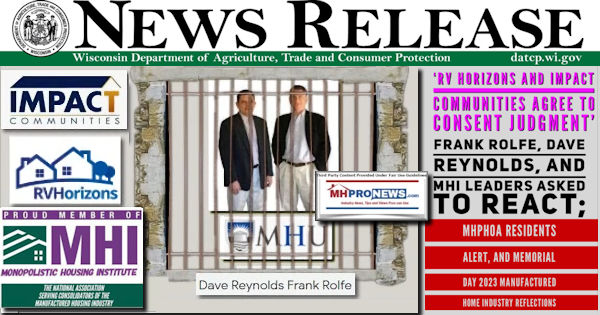
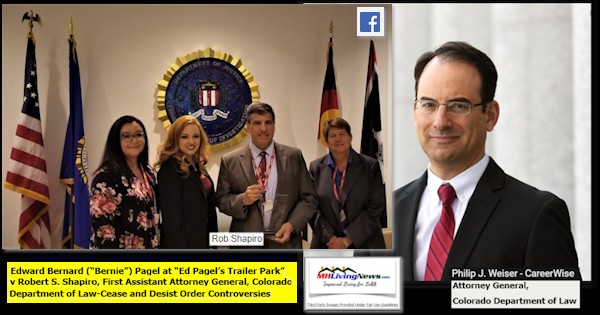
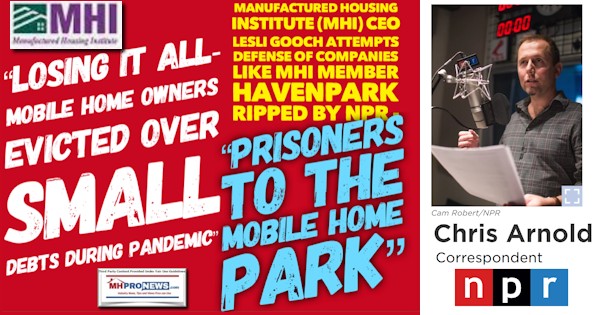
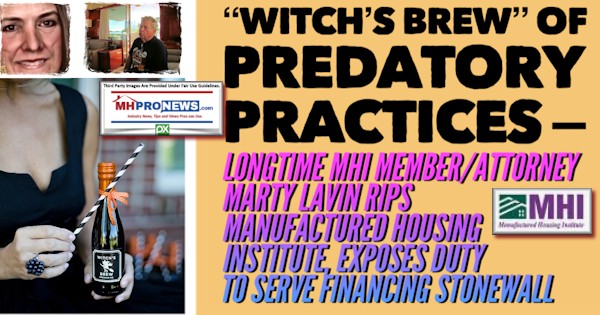
Routinely, MHI member brands are among those who are accused of that predatory behavior. And MHI's so-called code of ethical conduct appears to be gathering dust, as they hand out awards to firms that have poor Better Business Bureau ratings.
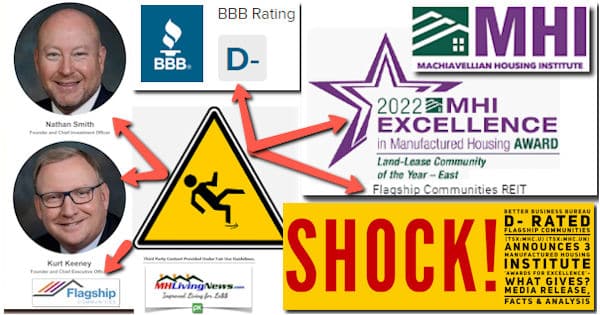
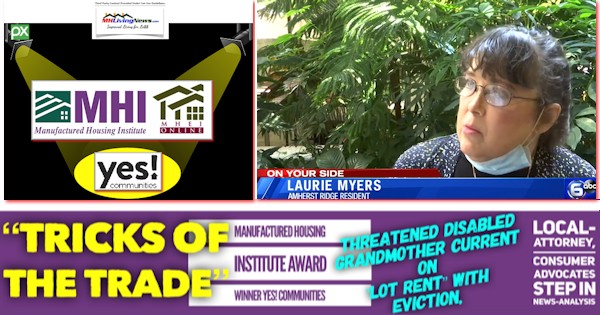
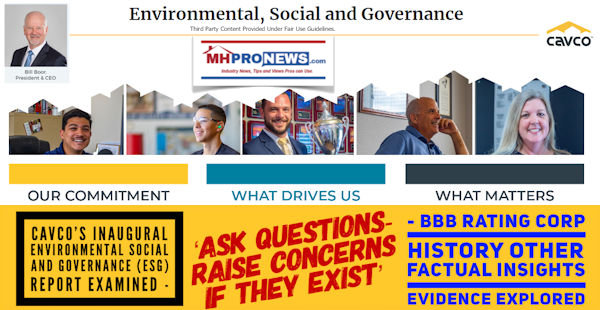
The tale is so sordid, it might be difficult to accept - save for the fact that there is so much evidence for the pattern outlined herein. On the bright side, some attorneys are fighting back on behalf of manufactured home community residents. Will more of that occur?
fhfa.gov/Videos/Pages/FHFA-Public-Listening-Session-Enterprise-Housing-Goals-ANPR.aspx
The remarks below and linked here were delivered at the session above. MHI spoke at that same session.
No Title
No Description
Summary and Conclusion
So, as Strommen soberly put it, a Rube Goldberg Machine of Human Suffering is underway and has been for years. A heavy dose of paltering and posturing occurs in MHVille. These are not victimless crimes, if they are successfully brought to trial. Ironically, the harms caused are outlined in part by Cavco Industries. A lack of affordable housing is costing the U.S. economy some $2 trillion dollars annually. Millions are being deprived of their personal part of the American Dream.
Notice: the graphic below can be expanded to a larger size.
See the instructions below the graphic below or click the image and follow the prompts.
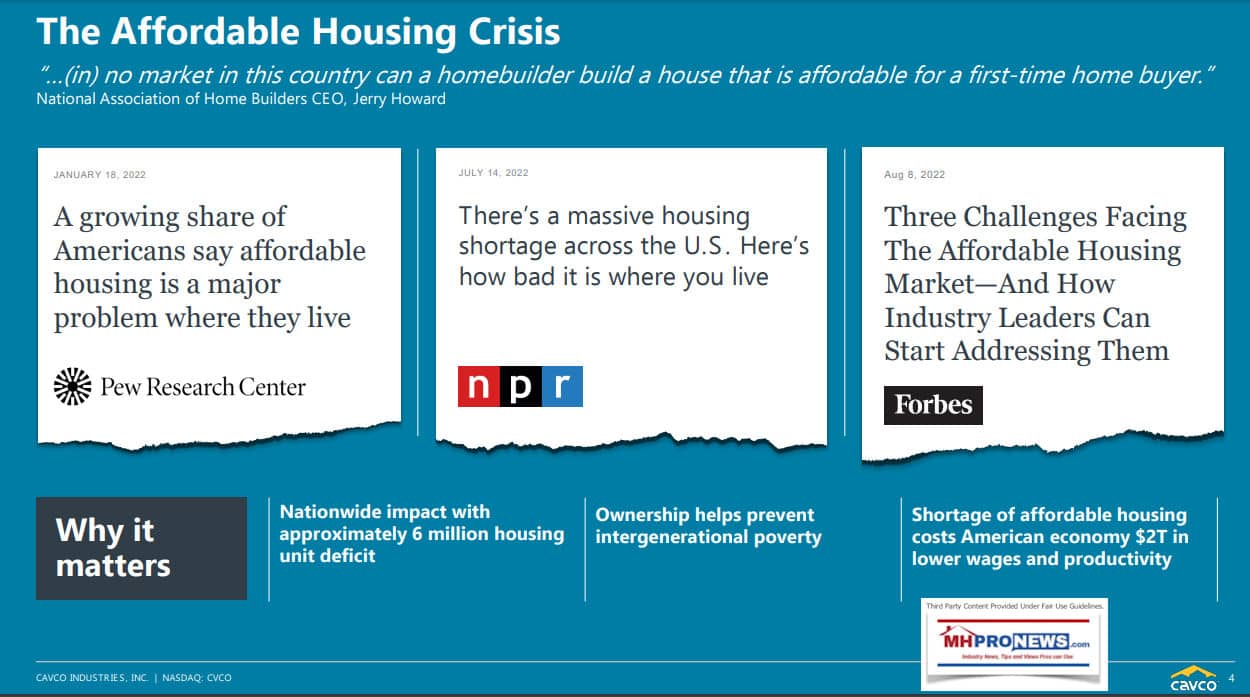

Through appropriate vs. sham investigation, litigation, and robust action, eliminating this blight can result in a flowering of American society. On the political left, Robert F. Kennedy Jr. is pledging to end the kleptocracy which he says is collusion between corporate and government in a neo-fascist model. On the right, Donald J. Trump and some others are saying similar things. The more the public understands these issues, the more likely appropriate action will eventually occur.
For years, the scandals of Bernie Madoff, Enron, WorldCom, Theranos, and others were operating in plain sight. They worked in part because of the Illusory Truth Effect. Investopedia did a recent report (May 2023) on the topic, arguably because more people are becoming aware of this pattern of deception and misdirection.
Investopedia's Cautionary Post on Illusory Truth Effect. What Is the Illusory Truth Effect? How Does Illusory Truth Effect Apply in MHVille? Fact Check, Analysis, Viewpoints Plus MH Stocks Update
Investopedia's Cautionary Post on Illusory Truth Effect. What Is the Illusory Truth Effect? How Does Illusory Truth Effect Apply in MHVille?
The day may come when those involved in this scandal operating in plain sight in manufactured housing results in a similar fashion to what occurred with Madoff, Theranos, and others. Until then, professionals must be aware that they are arguably been harmed, even if they work for one of the brands involved in this scheme. Ironically, it is the Biden White House Fact Sheet on Competition that presents the evidence. It is an apt way to close this report and analysis.
From White House Fact Sheet on Competition (July 9, 2021)
For decades, corporate consolidation has been accelerating. In over 75% of U.S. industries, a smaller number of large companies now control more of the business than they did twenty years ago. This is true across healthcare, financial services, agriculture and more.
That lack of competition drives up prices for consumers. As fewer large players have controlled more of the market, mark-ups (charges over cost) have tripled. Families are paying higher prices for necessities—things like prescription drugs, hearing aids, and internet service.
Barriers to competition are also driving down wages for workers. When there are only a few employers in town, workers have less opportunity to bargain for a higher wage and to demand dignity and respect in the workplace. In fact, research shows that industry consolidation is decreasing advertised wages by as much as 17%. Tens of millions of Americans—including those working in construction and retail—are required to sign non-compete agreements as a condition of getting a job, which makes it harder for them to switch to better-paying options.
In total, higher prices and lower wages caused by lack of competition are now estimated to cost the median American household $5,000 per year.
Inadequate competition holds back economic growth and innovation. The rate of new business formation has fallen by almost 50% since the 1970s as large businesses make it harder for Americans with good ideas to break into markets. There are fewer opportunities for existing small and independent businesses to access markets and earn a fair return. Economists find that as competition declines, productivity growth slows, business investment and innovation decline, and income, wealth, and racial inequality widen.
When past presidents faced similar threats from growing corporate power, they took bold action. In the early 1900s, Teddy Roosevelt’s Administration broke up the trusts controlling the economy—Standard Oil, J.P. Morgan’s railroads, and others—giving the little guy a fighting chance. In the late 1930s, FDR’s Administration supercharged antitrust enforcement, increasing more than eightfold the number of cases brought in just two years—enforcement actions that saved consumers billions in today’s dollars and helped unleash decades of sustained, inclusive economic growth. ..." ##
The case can be made that the above was political paltering and posturing, because Biden is in office due in part to the Civic Alliance and people like Buffett, Gates, Bezos, Zuckerberg, et al. But be the above Fact Sheet and related a sincere effort or just another political show to distract the public, the thrust of the facts above are apt. Antitrust violations are not a victimless crime. Bring the titans who rule America to heel through robust antitrust action and watch the American economy - and manufactured housing - flourish. ##
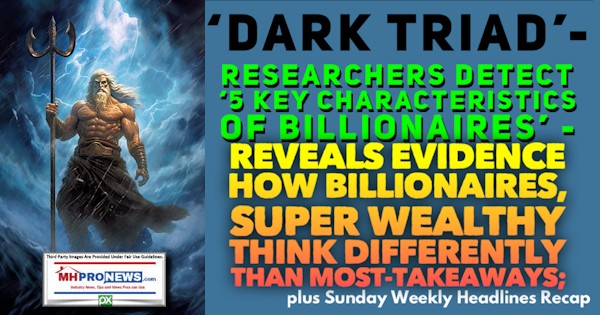
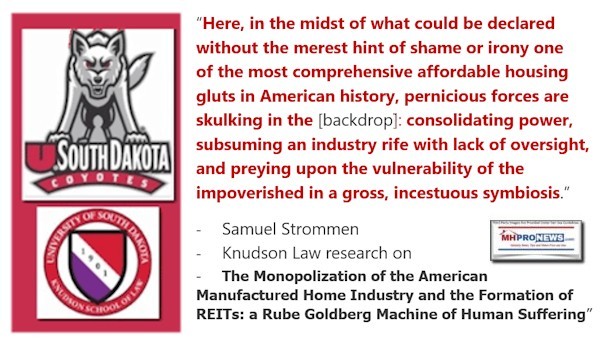
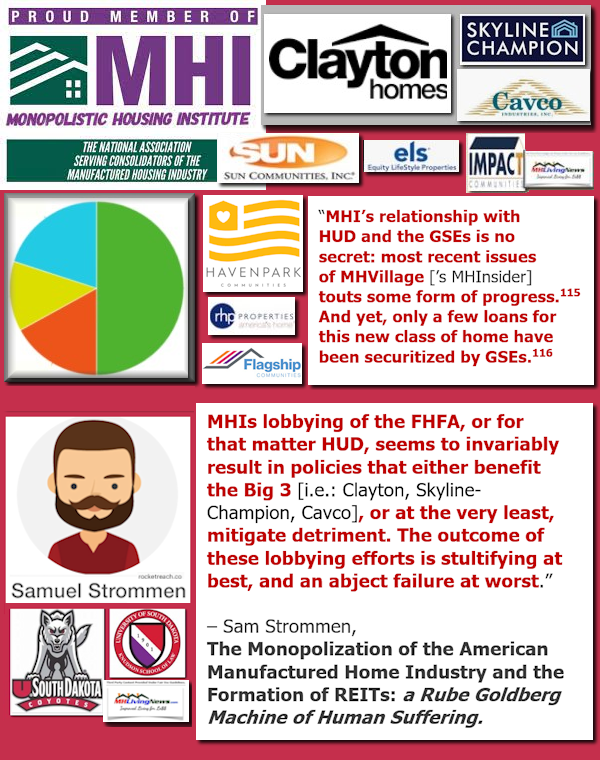

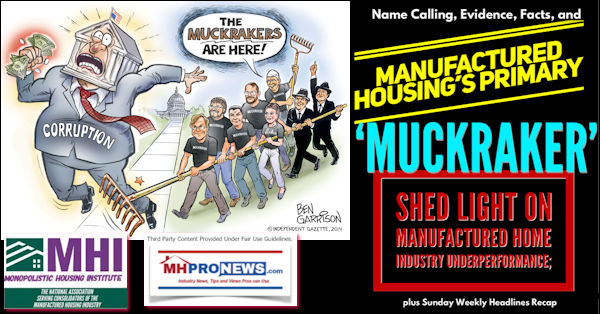
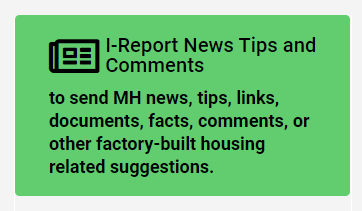
[cp_popup display="inline" style_id="139941" step_id = "1"][/cp_popup]
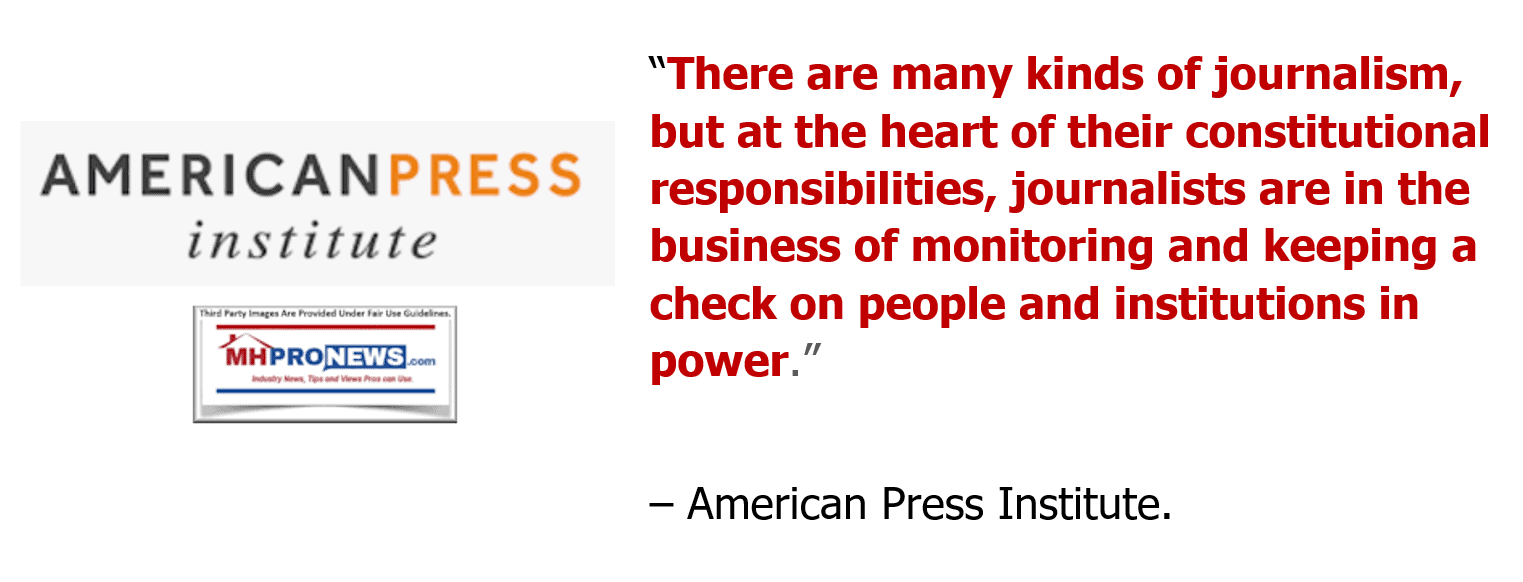
Stay tuned for more of what is 'behind the curtains' as well as what is obvious and in your face reporting that are not found anywhere else in MHVille. It is all here, which may explain why this is the runaway largest and most-read source for authentic manufactured home “News through the lens of manufactured homes and factory-built housing” © where “We Provide, You Decide.” © ## (Affordable housing, manufactured homes, reports, fact-checks, analysis, and commentary. Third-party images or content are provided under fair use guidelines for media.) (See Related Reports, further below. Text/image boxes often are hot-linked to other reports that can be access by clicking on them.)
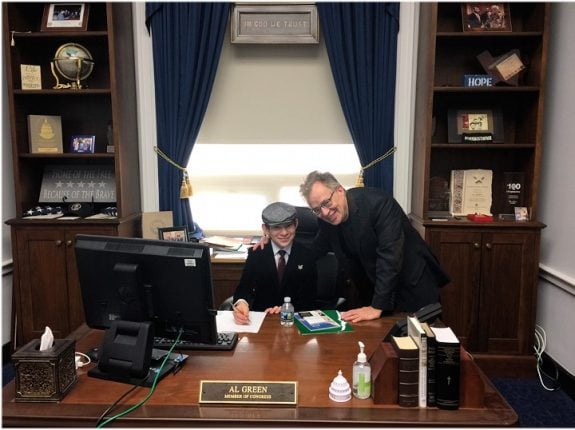
By L.A. "Tony" Kovach - for MHProNews.com.
Tony earned a journalism scholarship and earned numerous awards in history and in manufactured housing.
For example, he earned the prestigious Lottinville Award in history from the University of Oklahoma, where he studied history and business management. He's a managing member and co-founder of LifeStyle Factory Homes, LLC, the parent company to MHProNews, and MHLivingNews.com.
This article reflects the LLC's and/or the writer's position, and may or may not reflect the views of sponsors or supporters.
Connect on LinkedIn: http://www.linkedin.com/in/latonykovach
Related References:
The text/image boxes below are linked to other reports, which can be accessed by clicking on them.
Manufactured Housing Association Presses HUD for Specific Inclusion of HUD-Regulated Manufactured Homes in New Affirmatively Furthering Fair Housing (AFFH) Rule; plus MHVille Markets Update
Manufactured Housing Association, Manufactured Housing Association for Regulatory Reform, Presses HUD, Specific Inclusion, HUD-Regulated, Manufactured Homes, New, Affirmatively Furthering Fair Housing, AFFH Rule; plus MHVille Markets Update 4.26.2023, Manufactured housing, production, factories, retail, dealers, manufactured home, communities, passive mobile home park investing, suppliers, brokers, finance, financial services, macro-markets, manufactured housing stocks, Manufactured Home Communities Real Estate Investment Trusts, MHC REITs,

